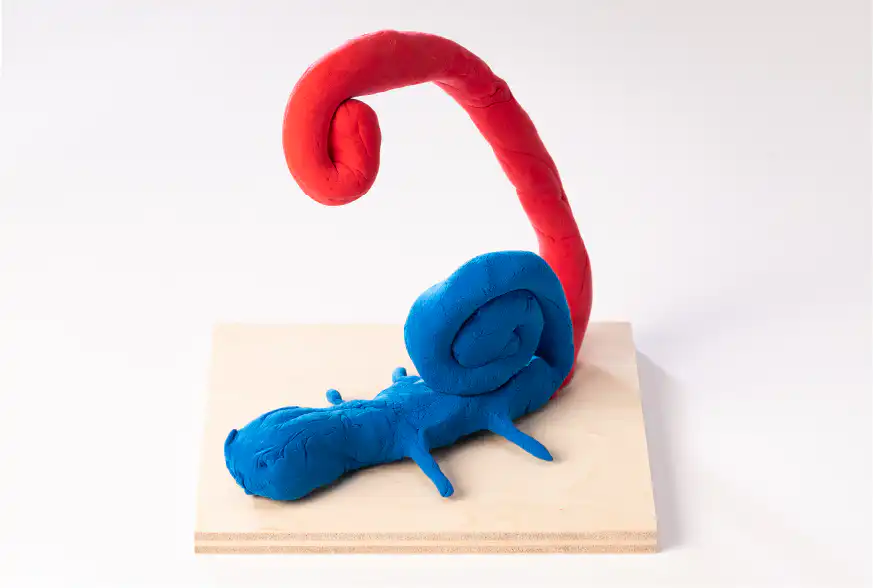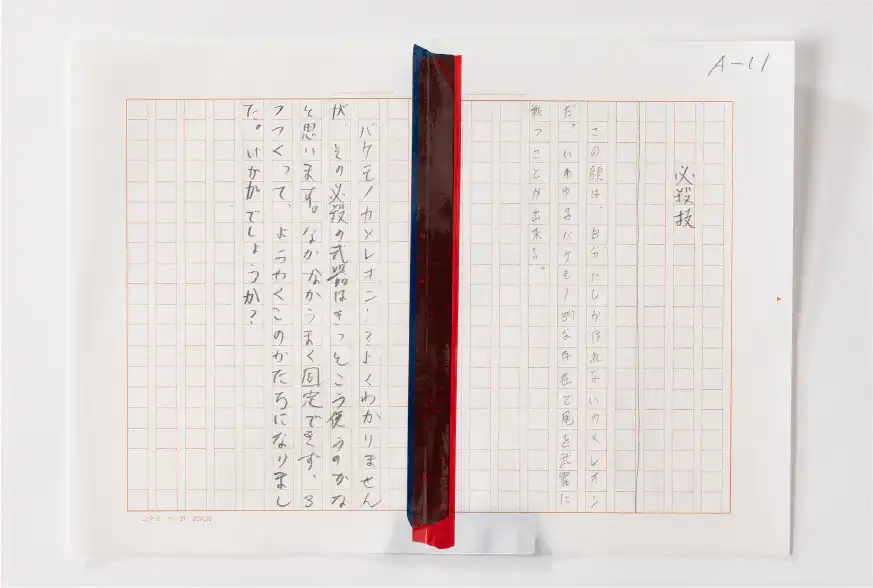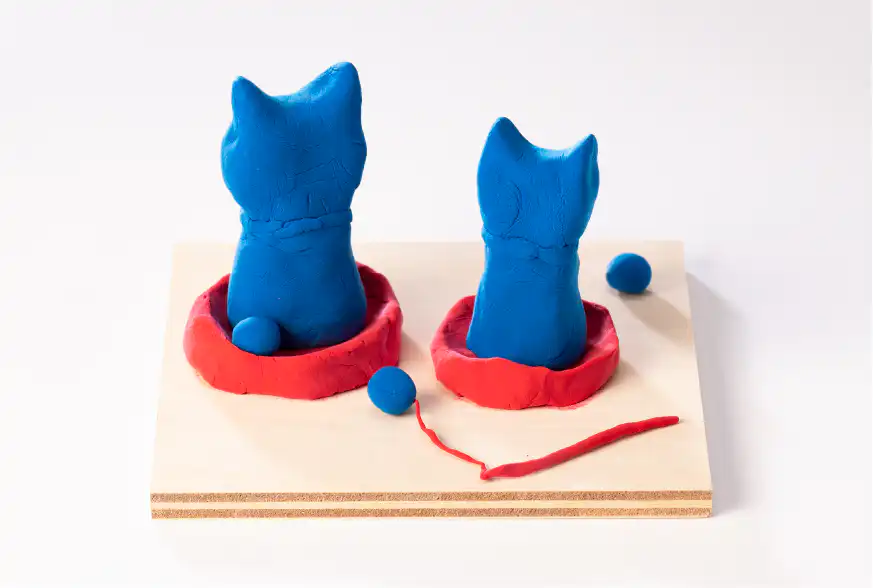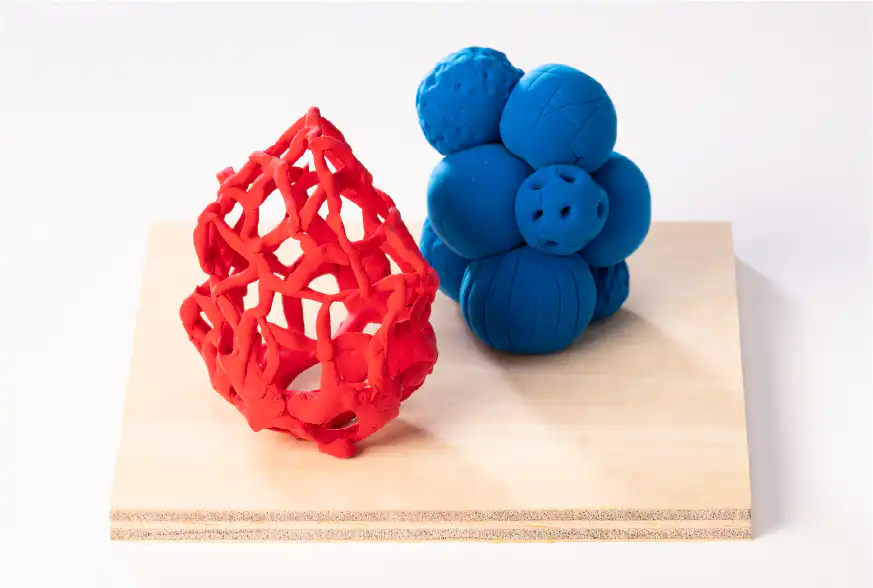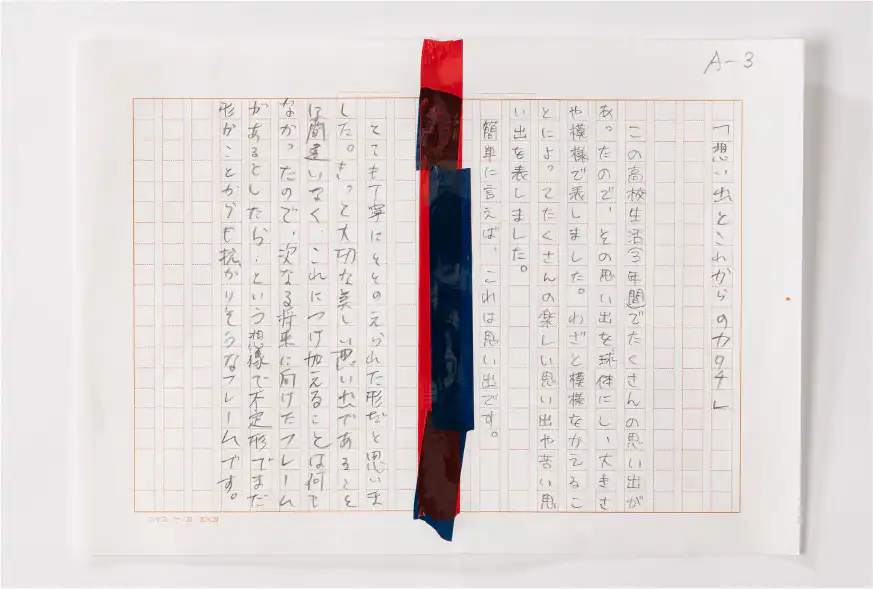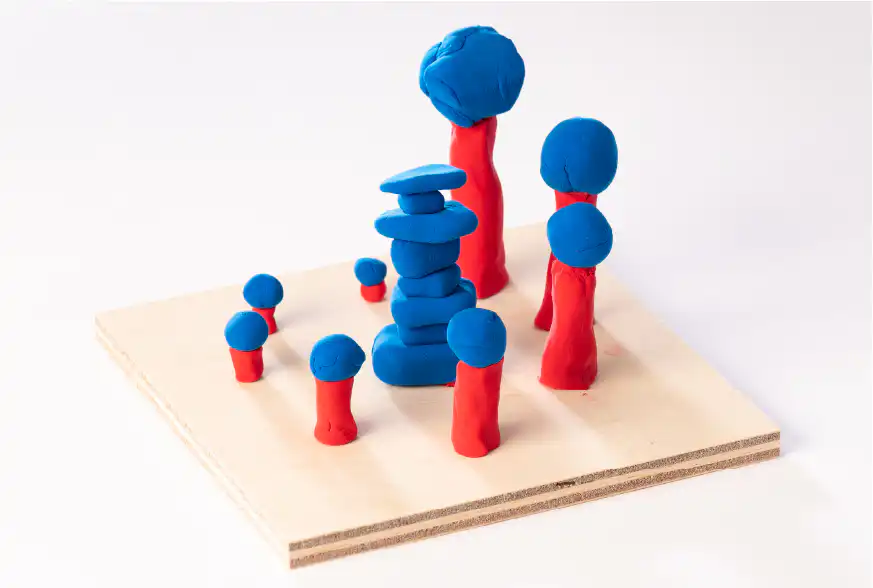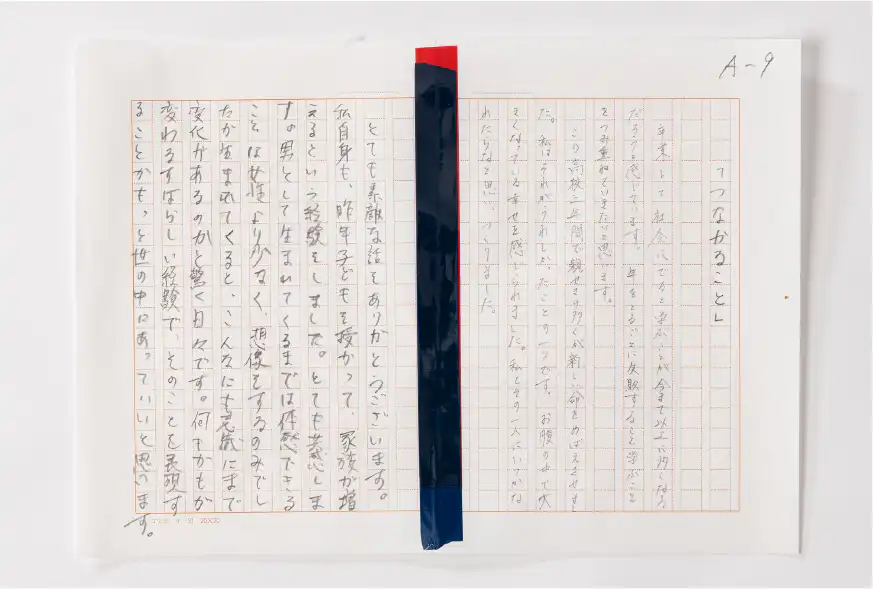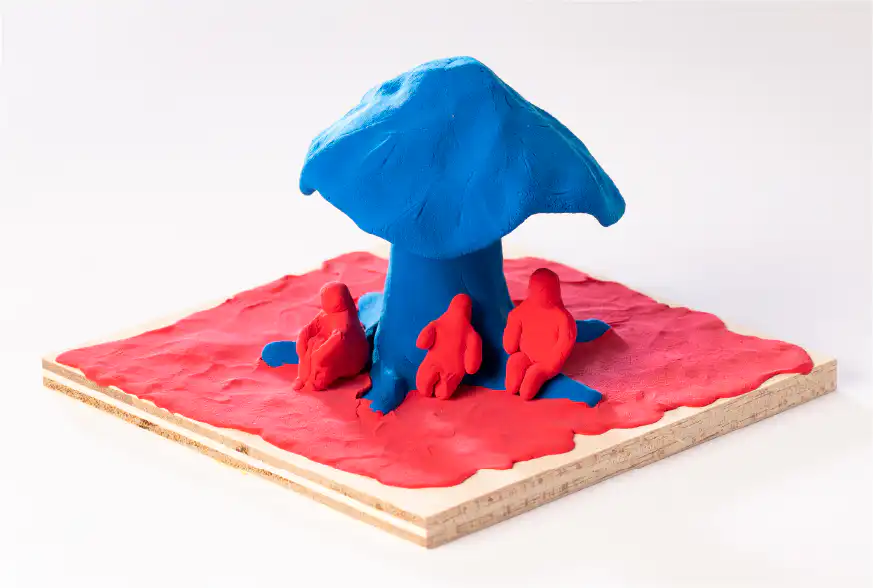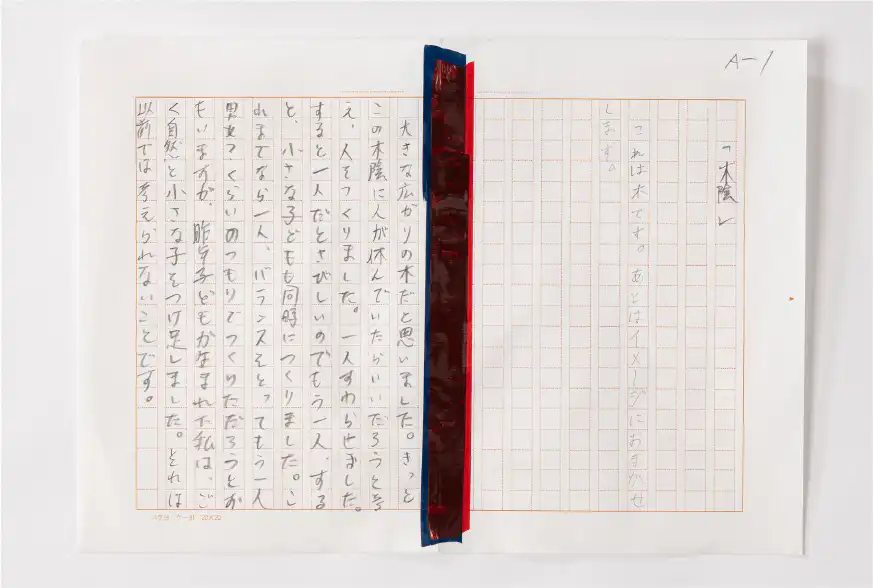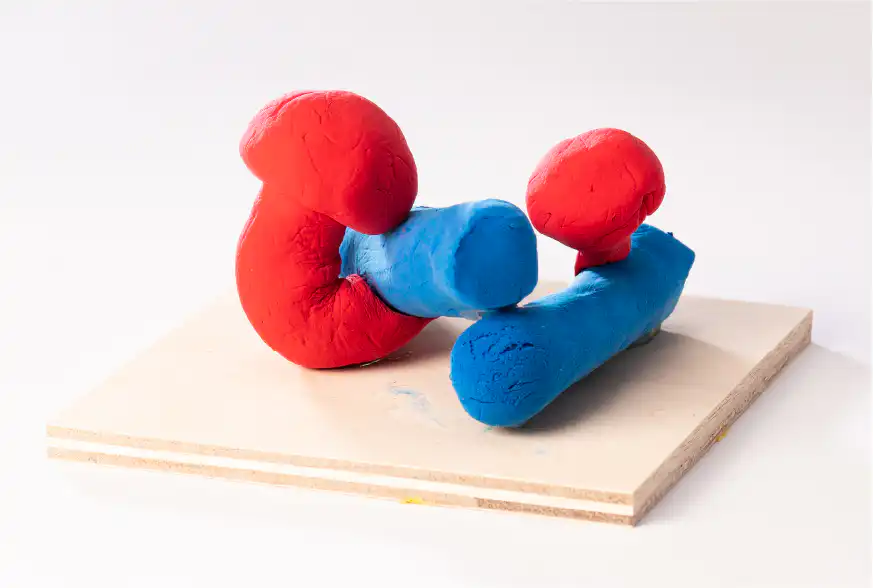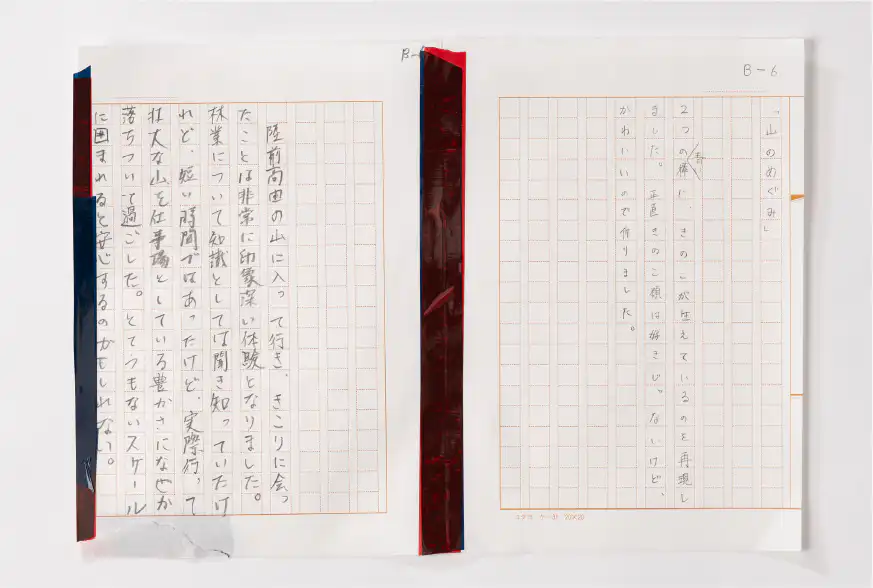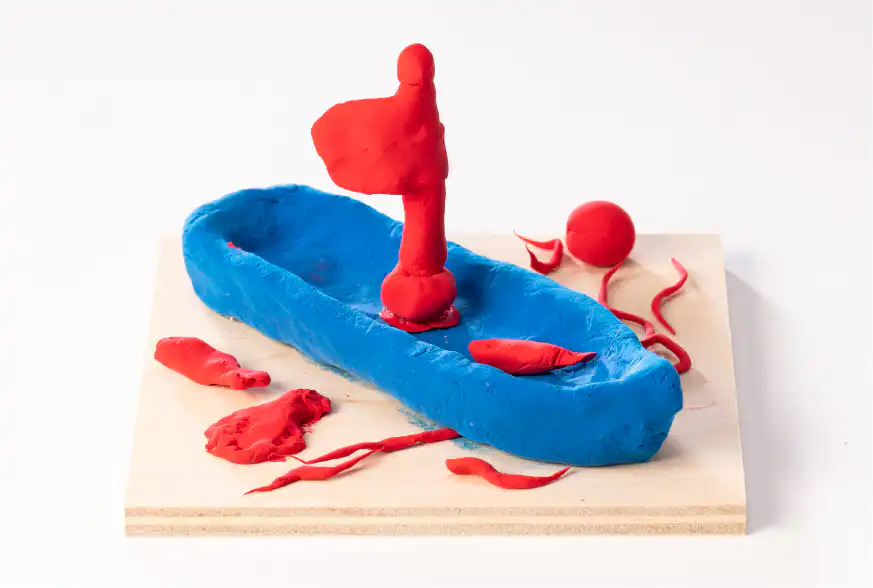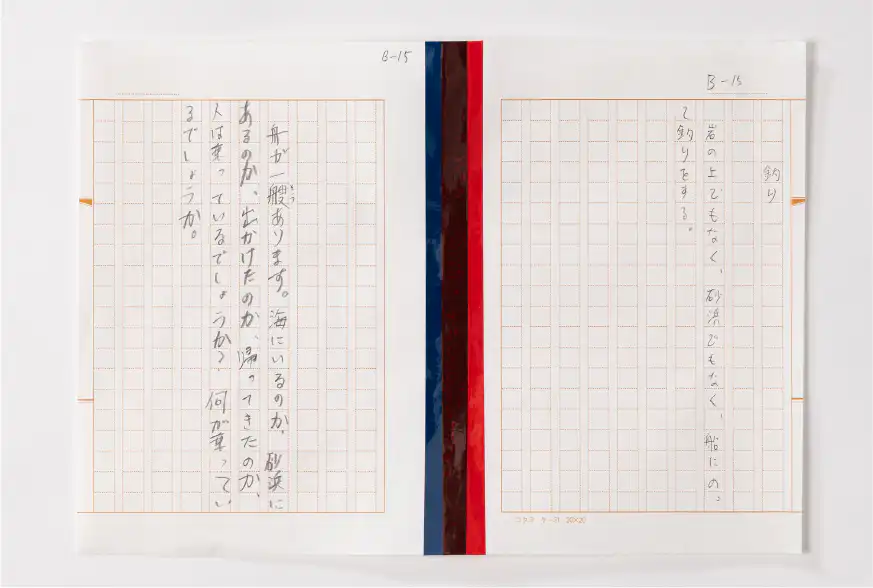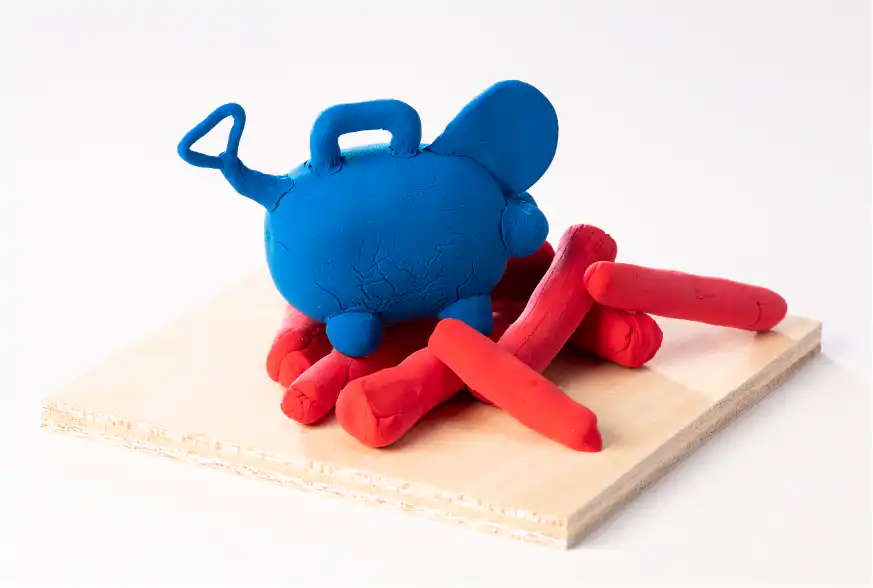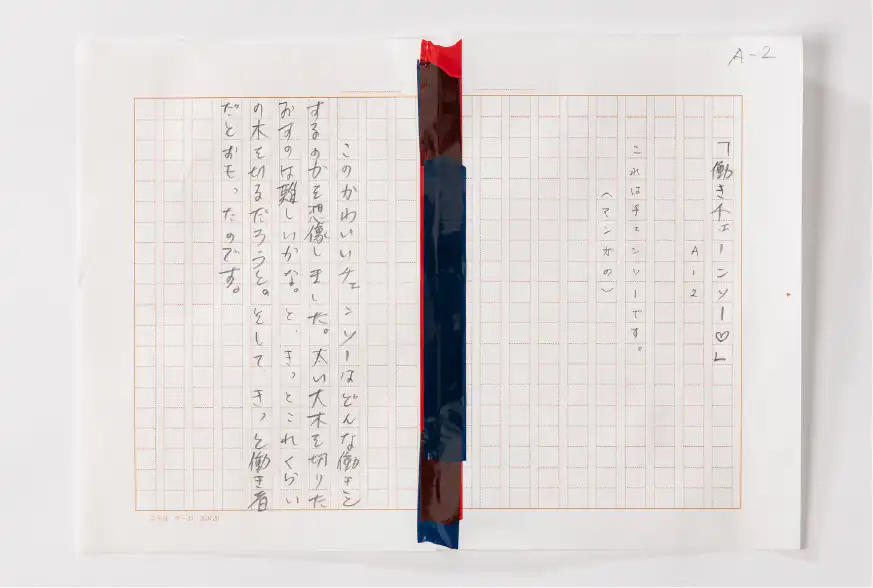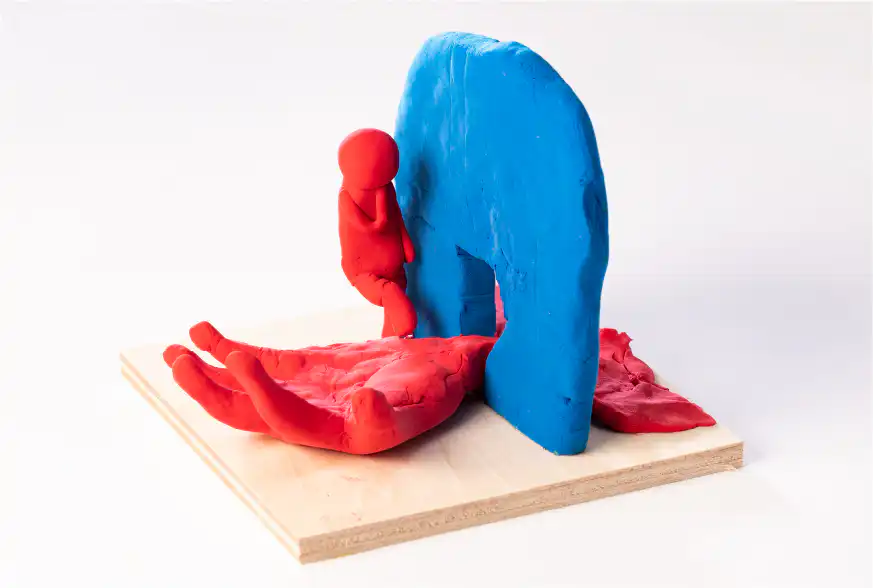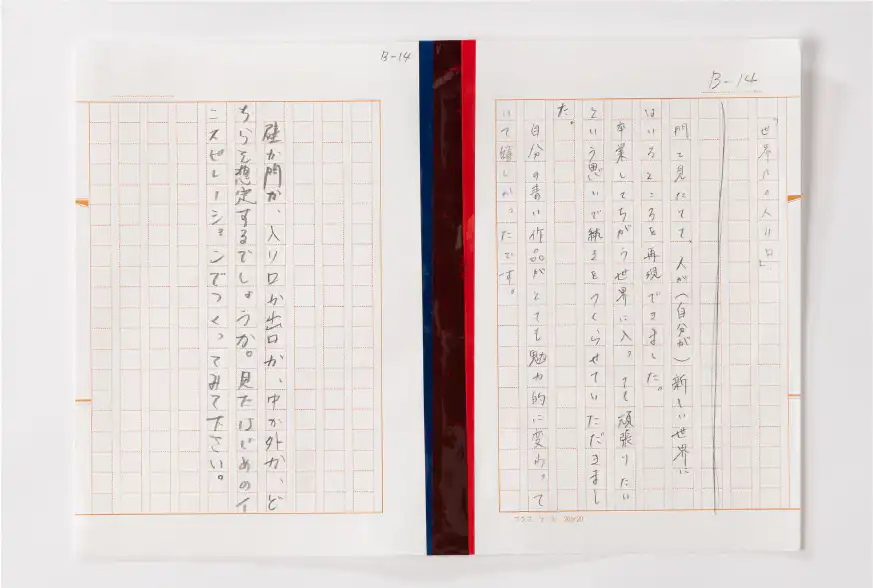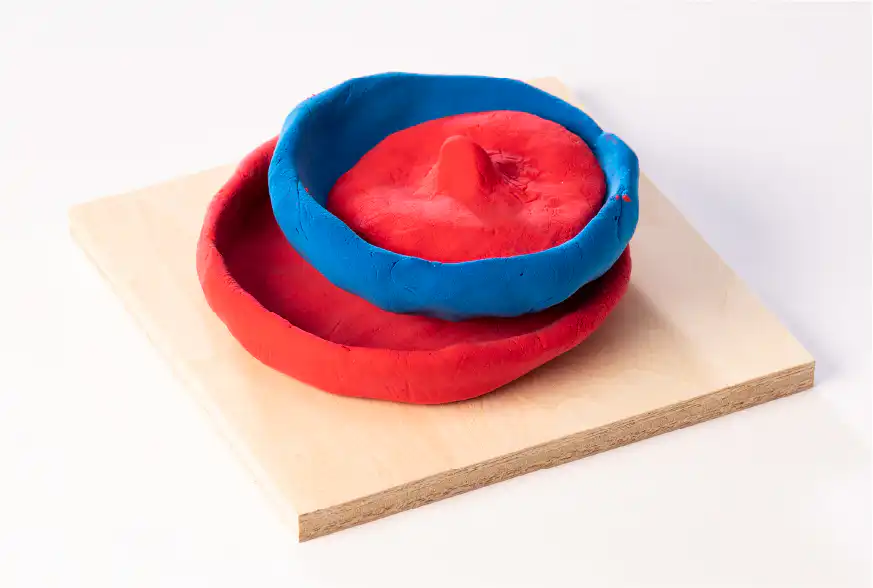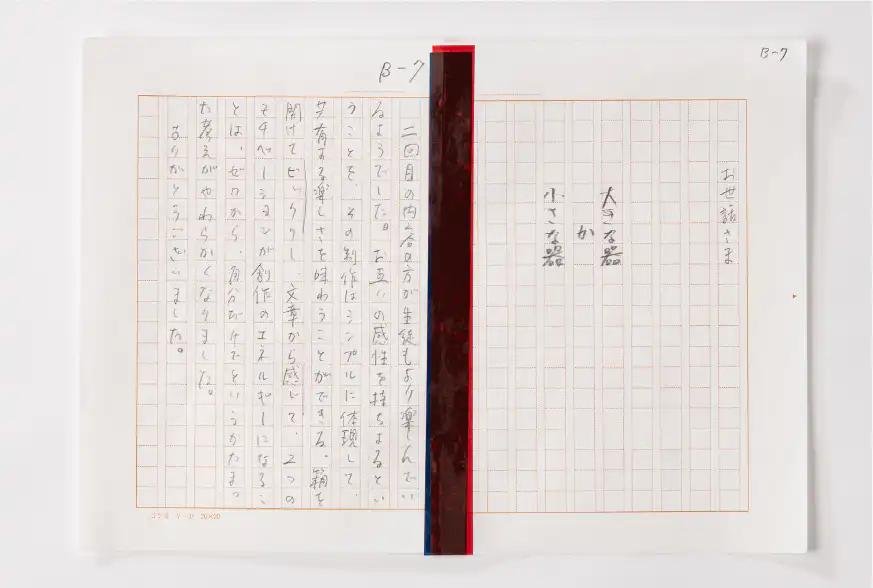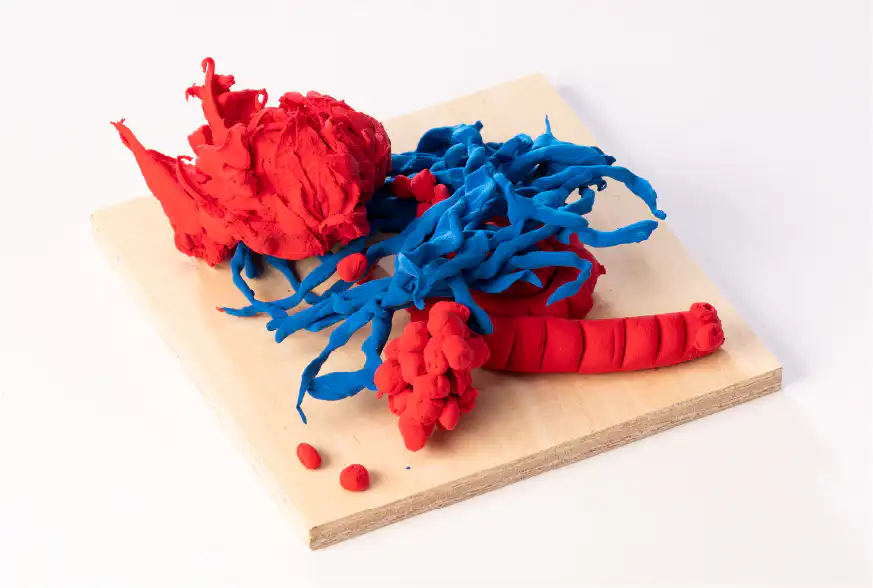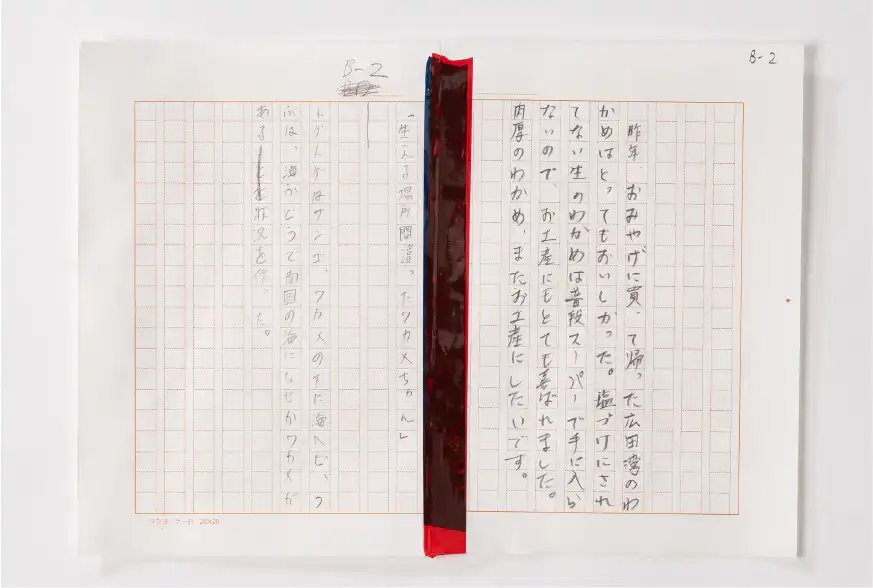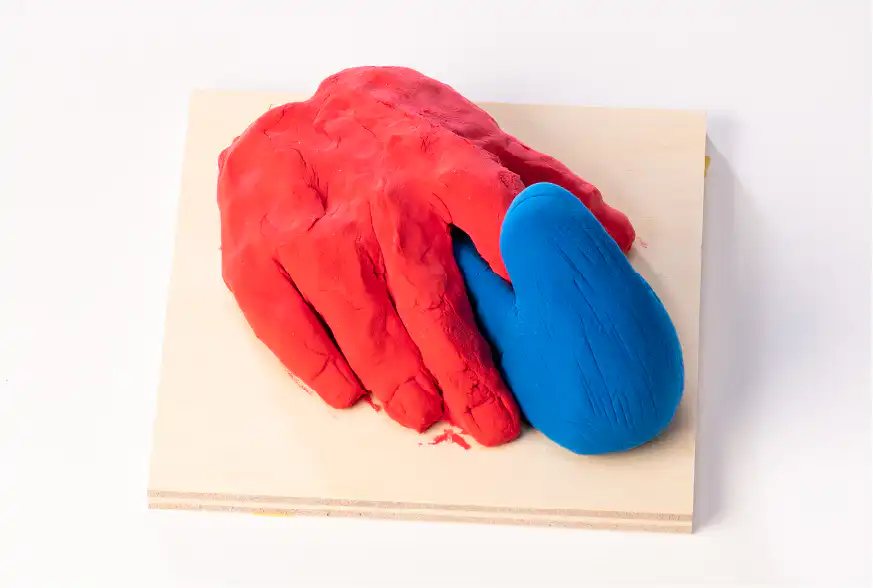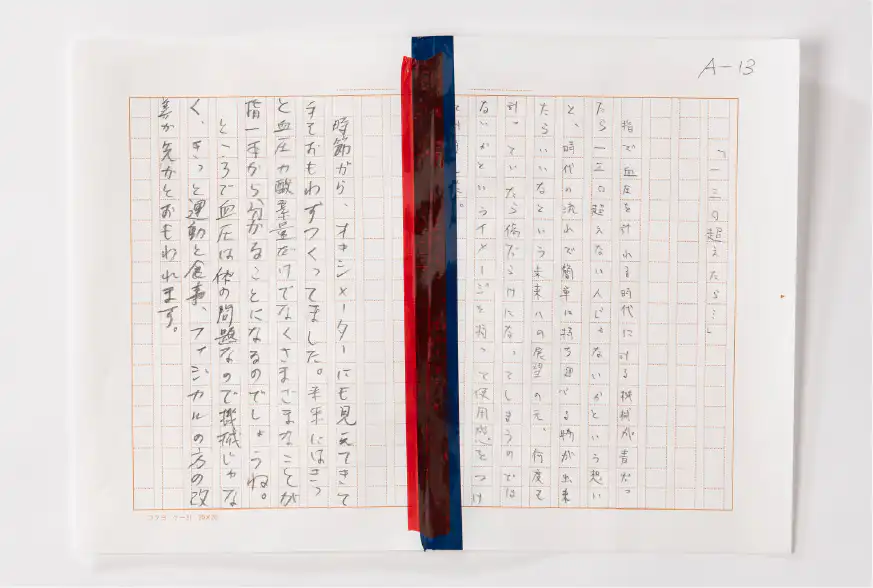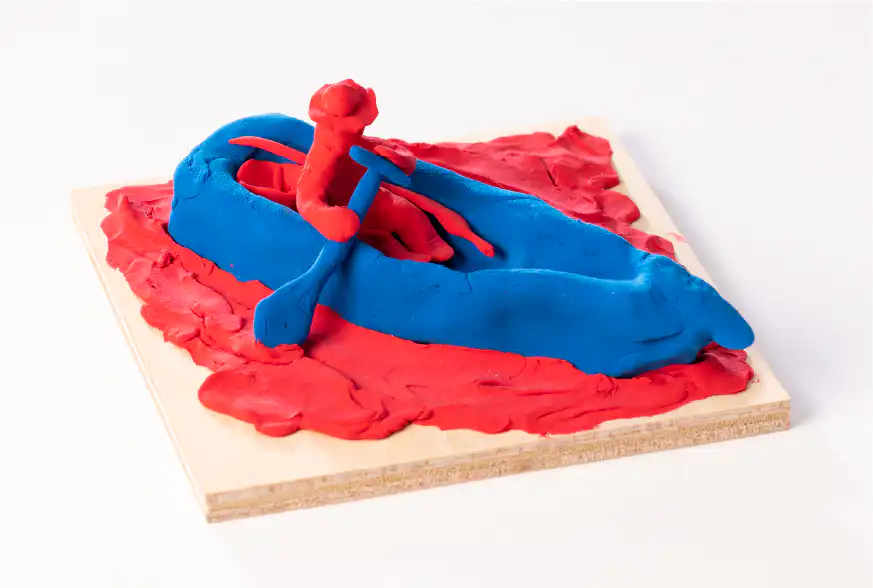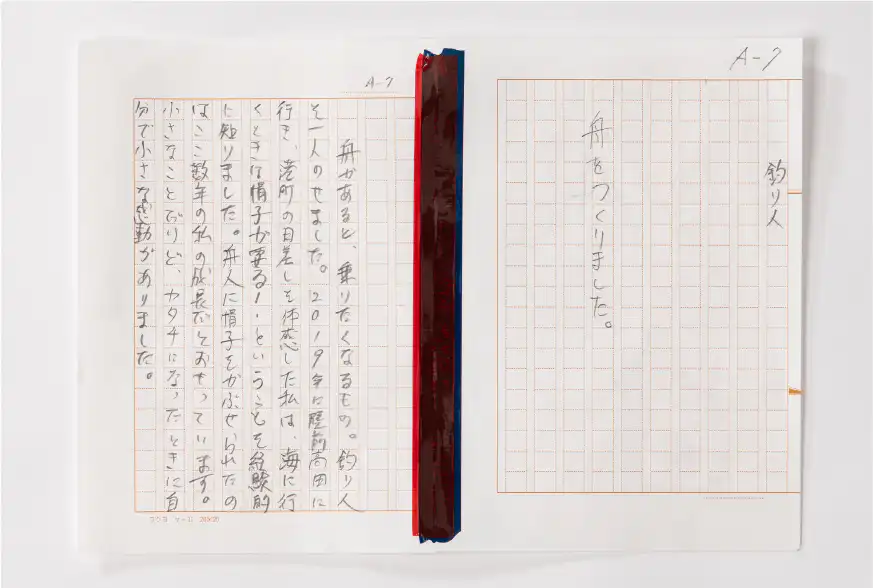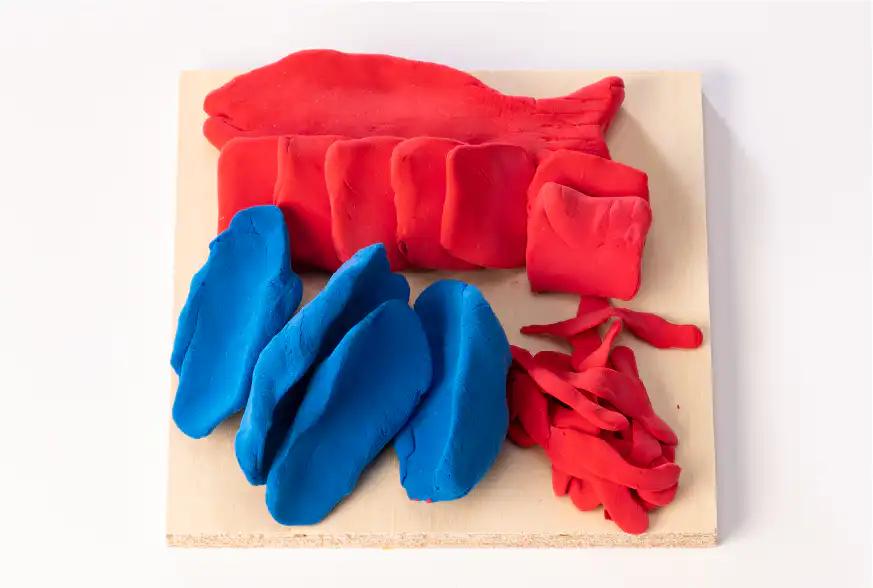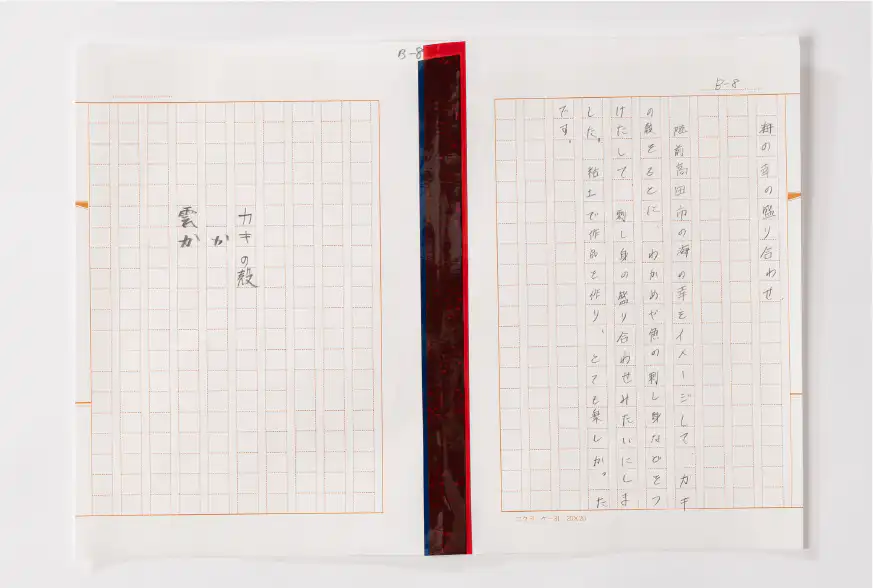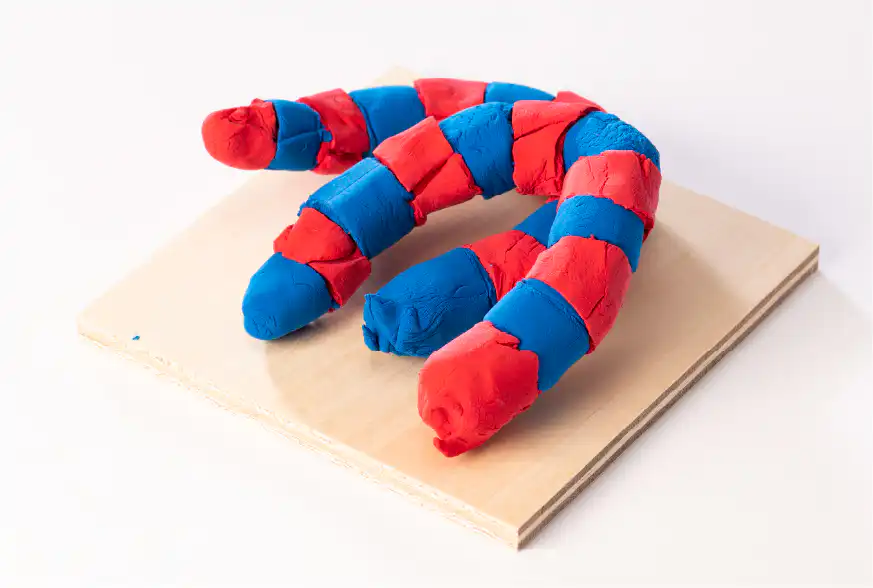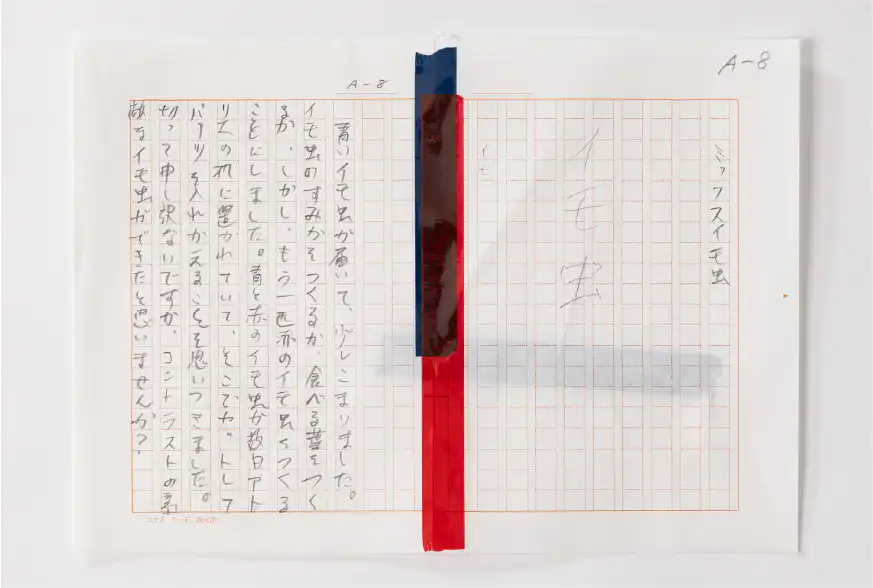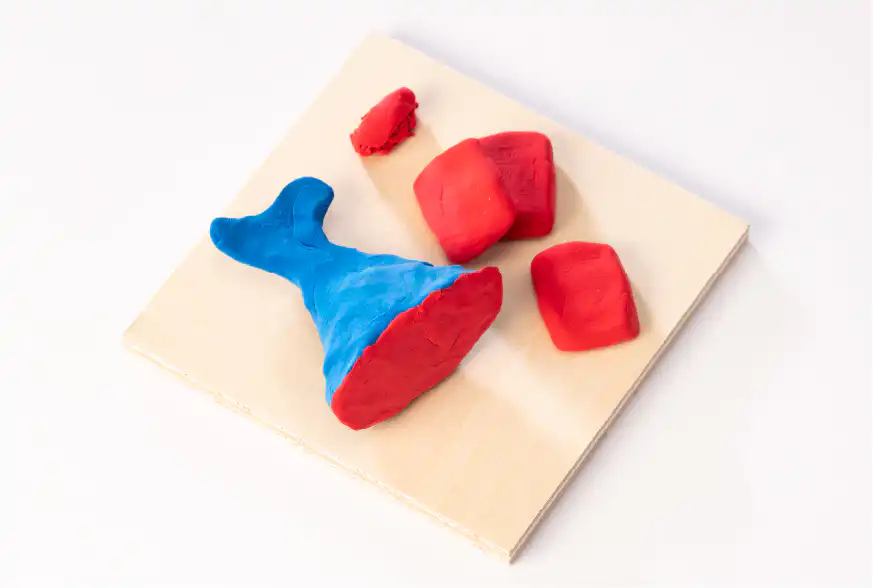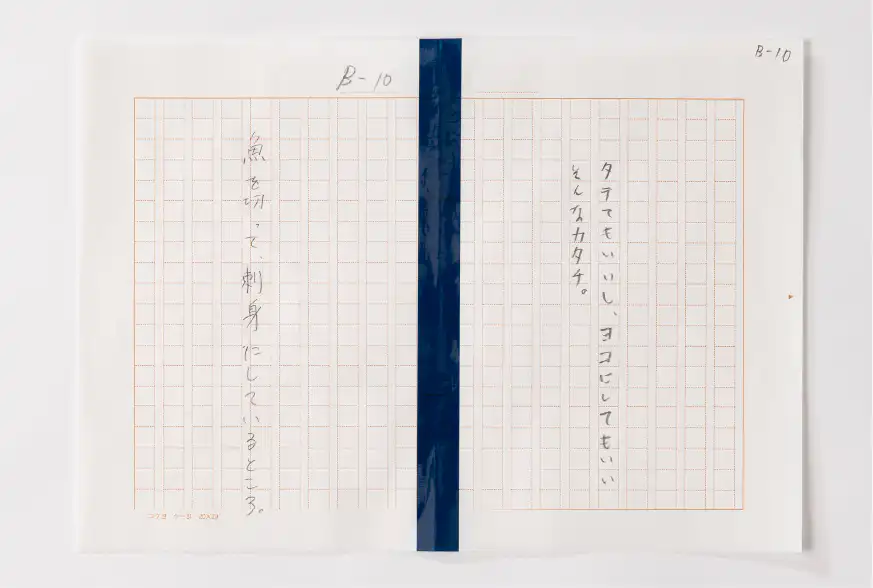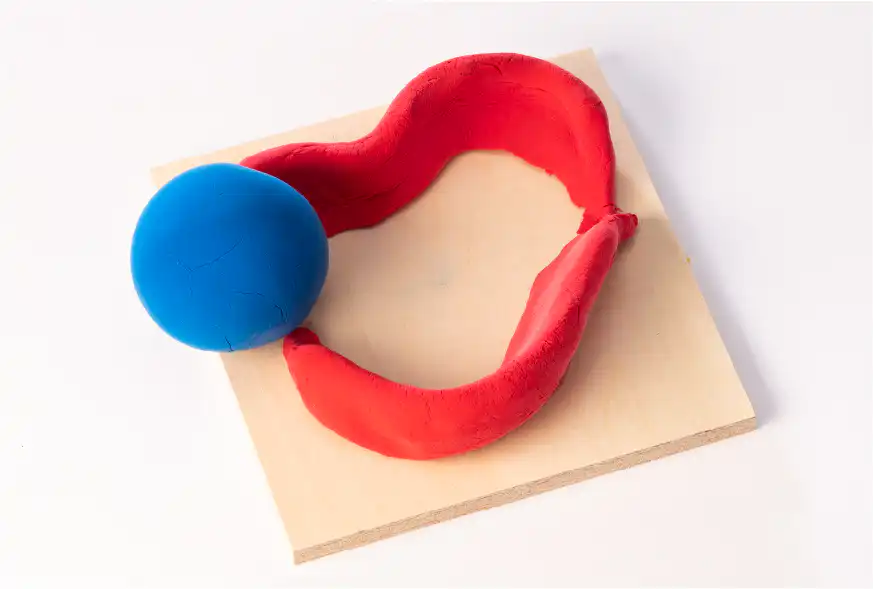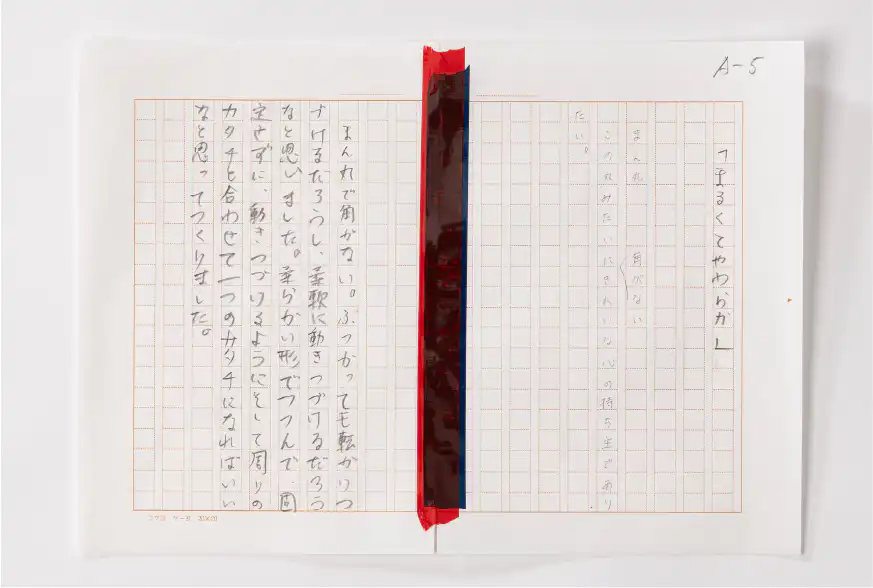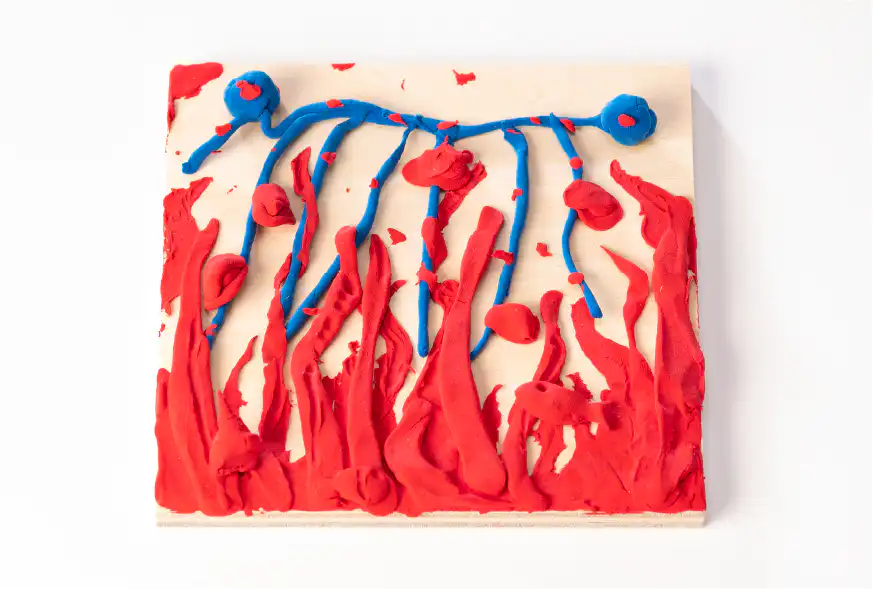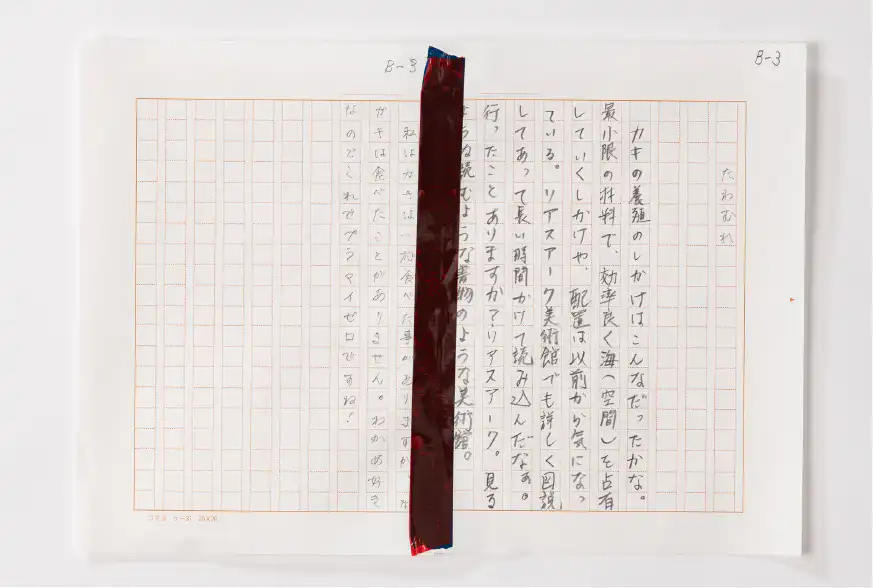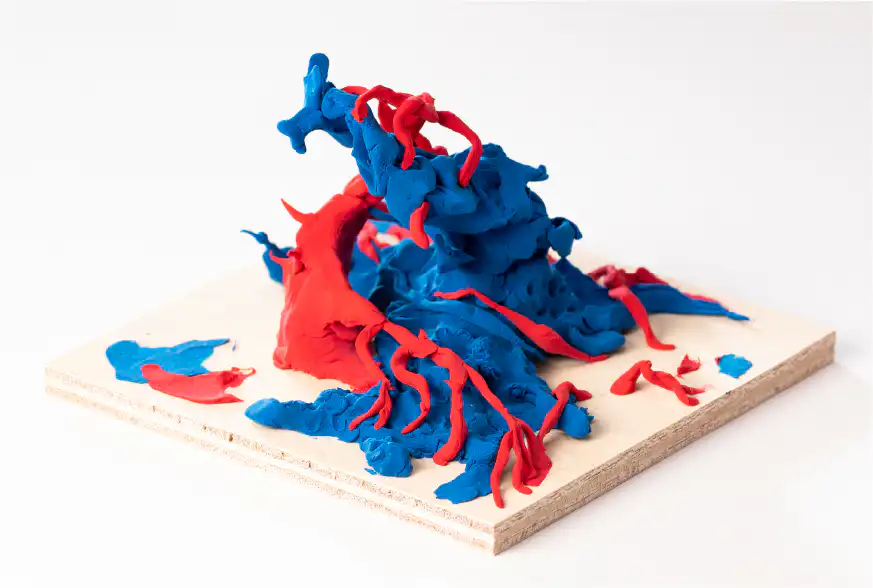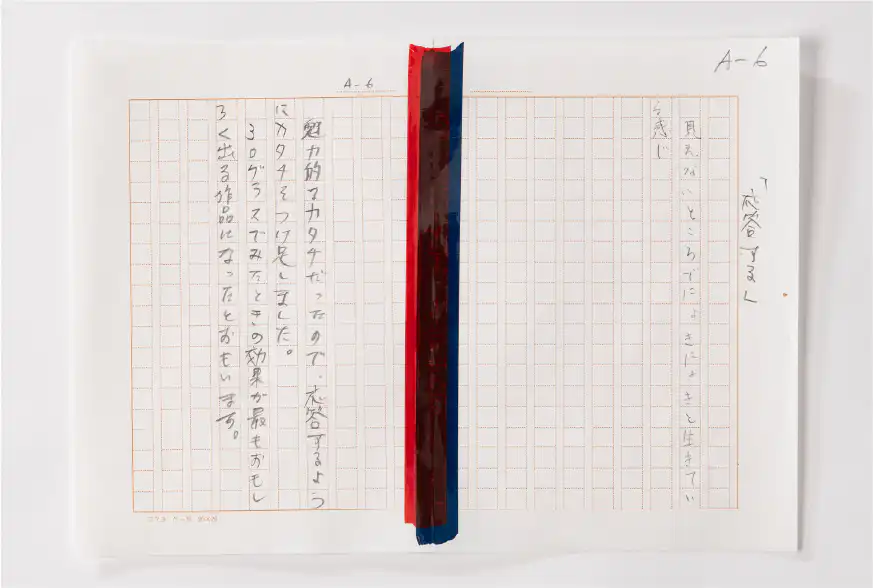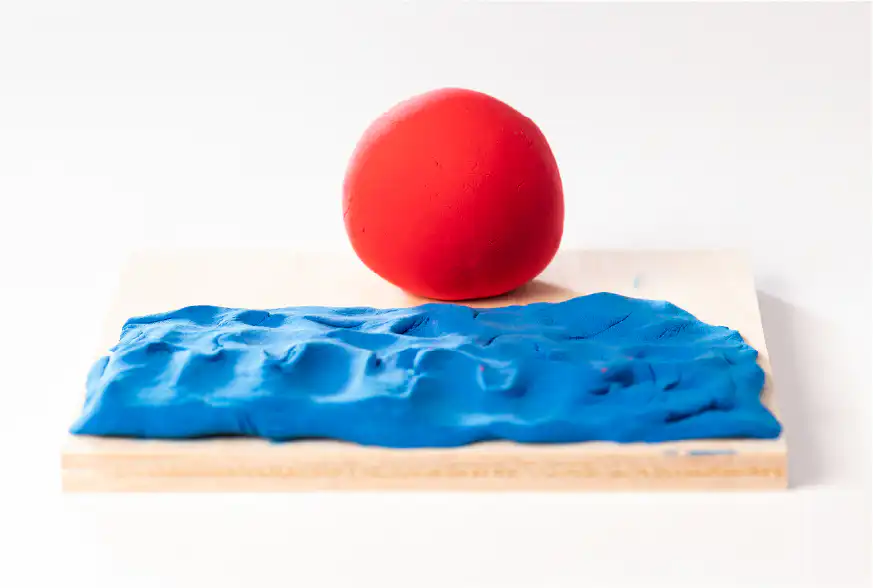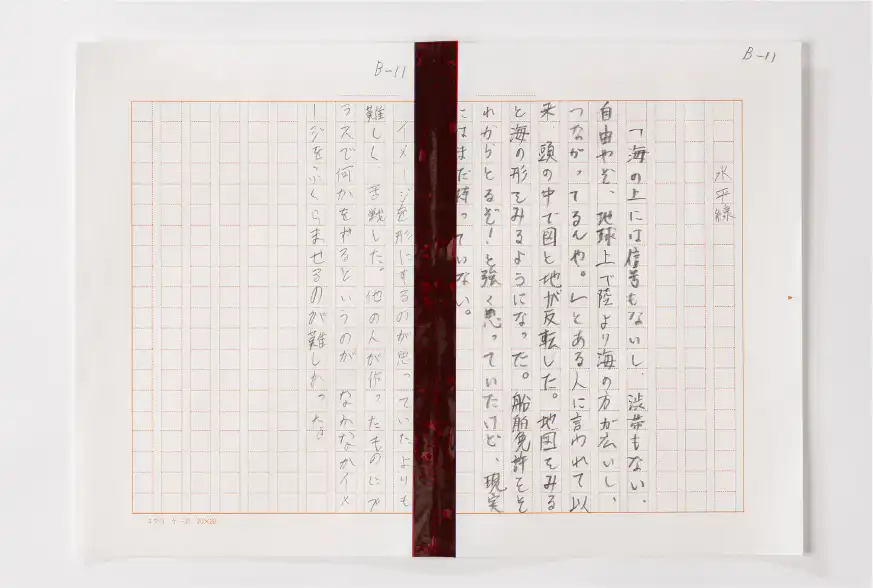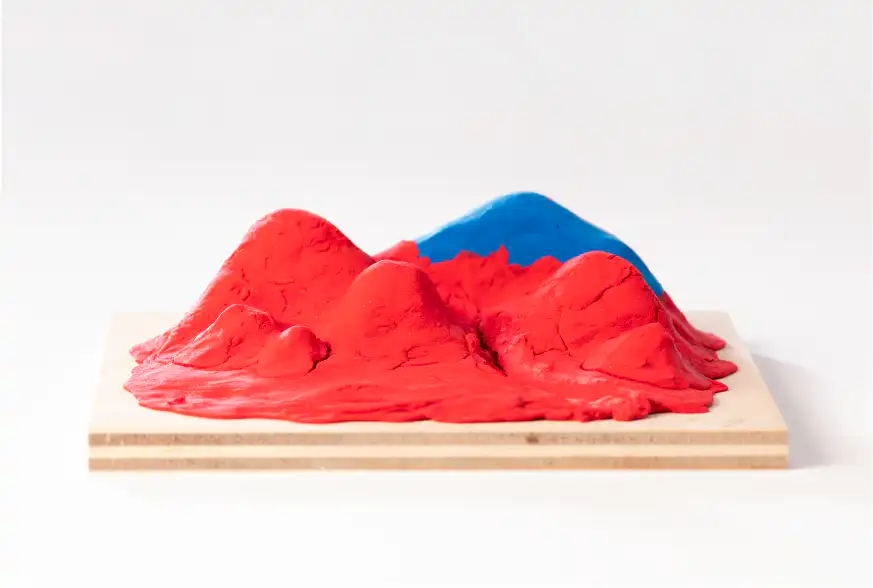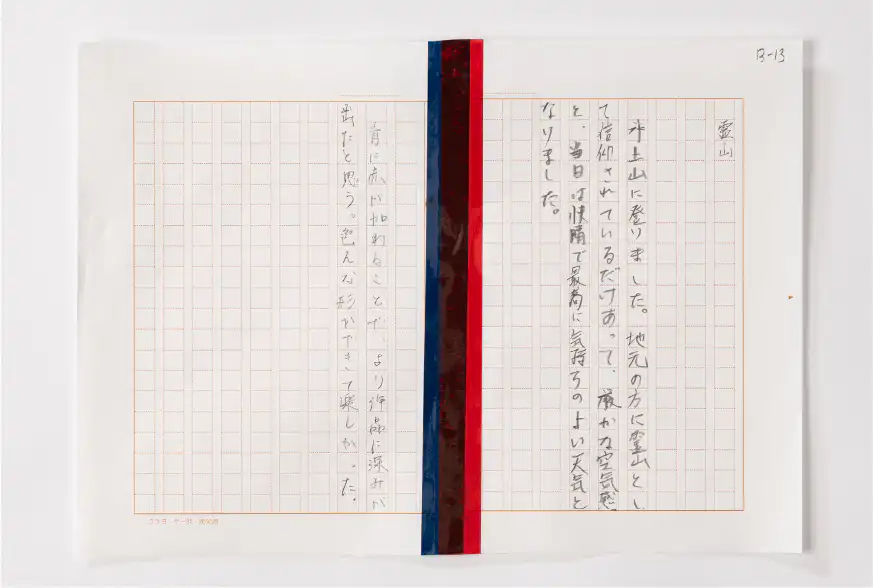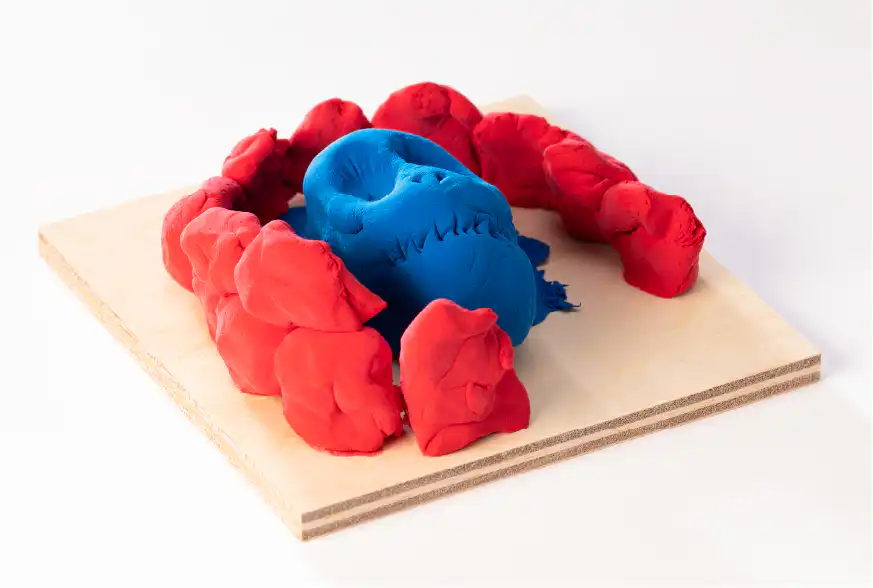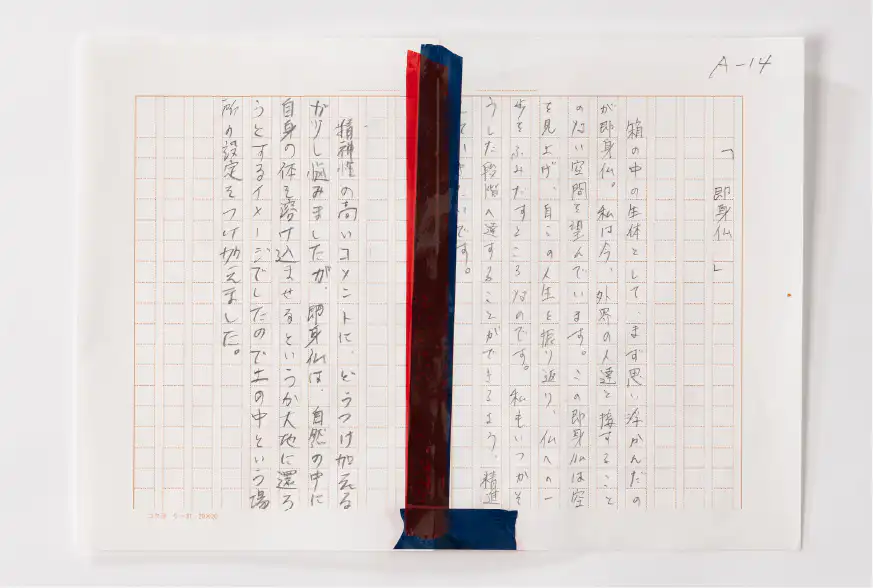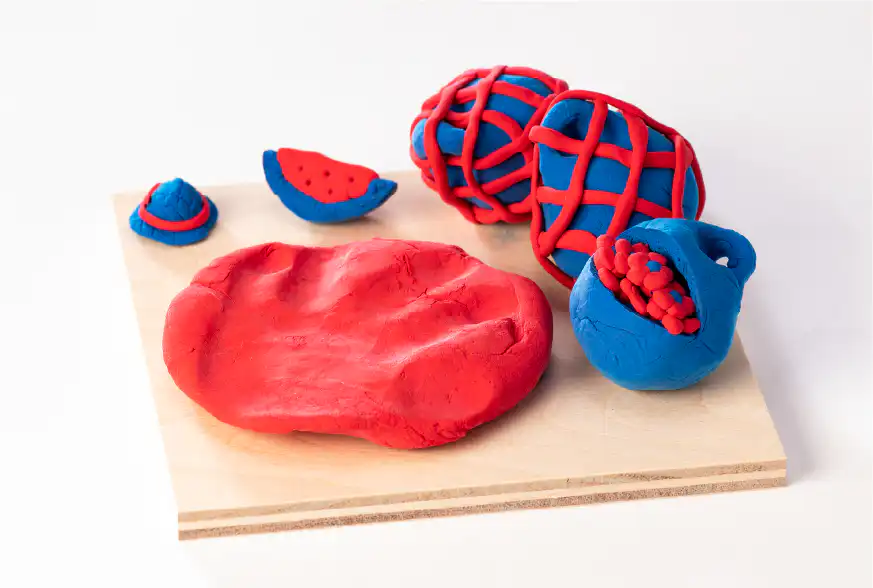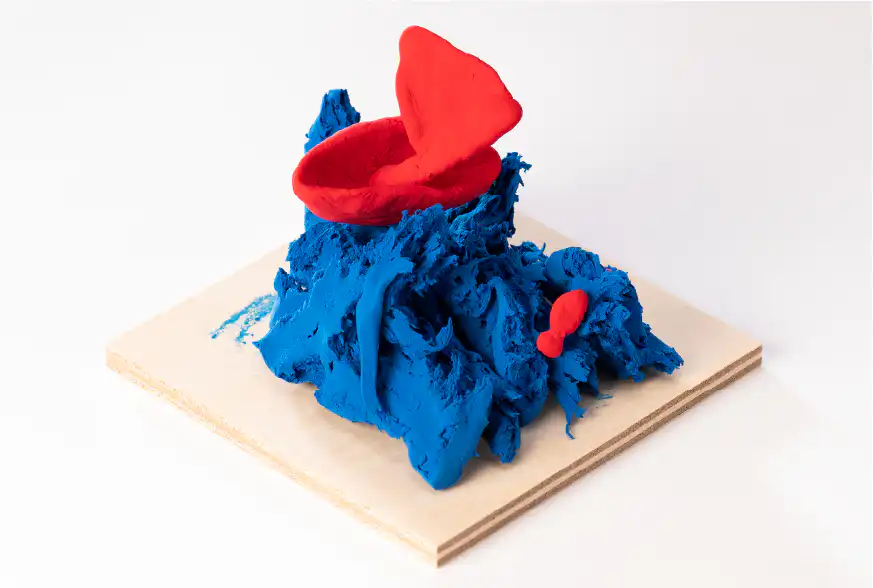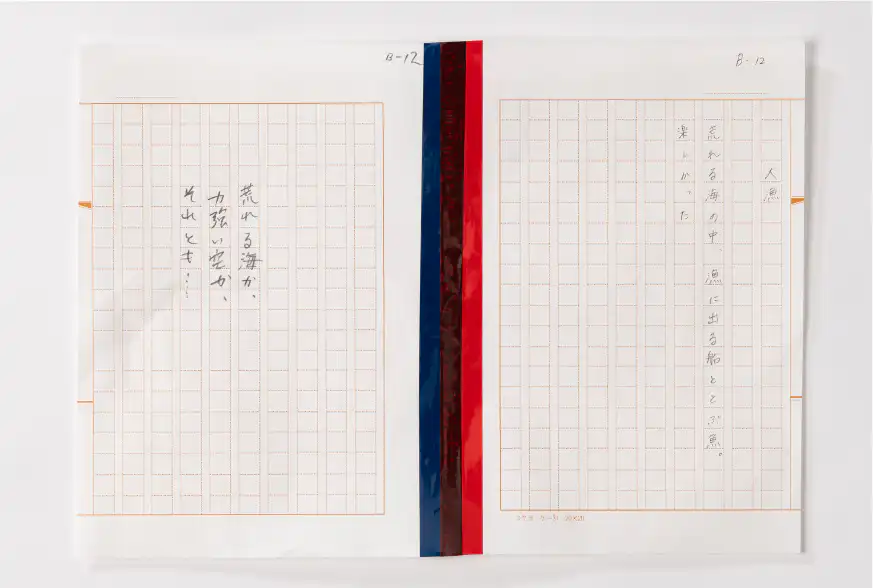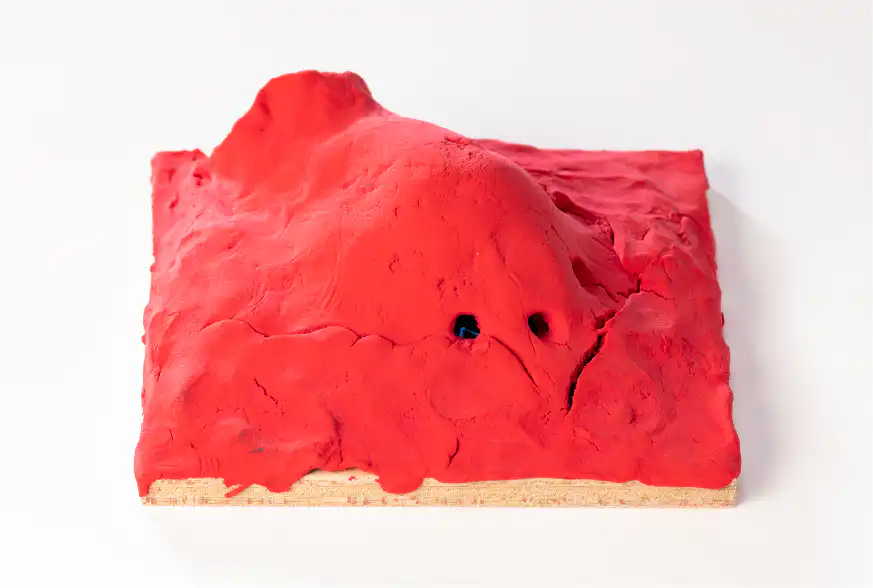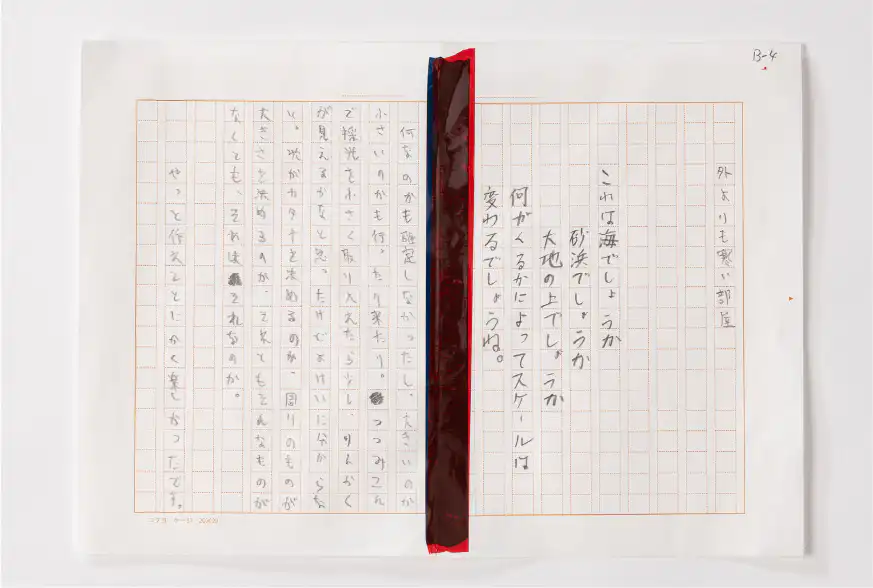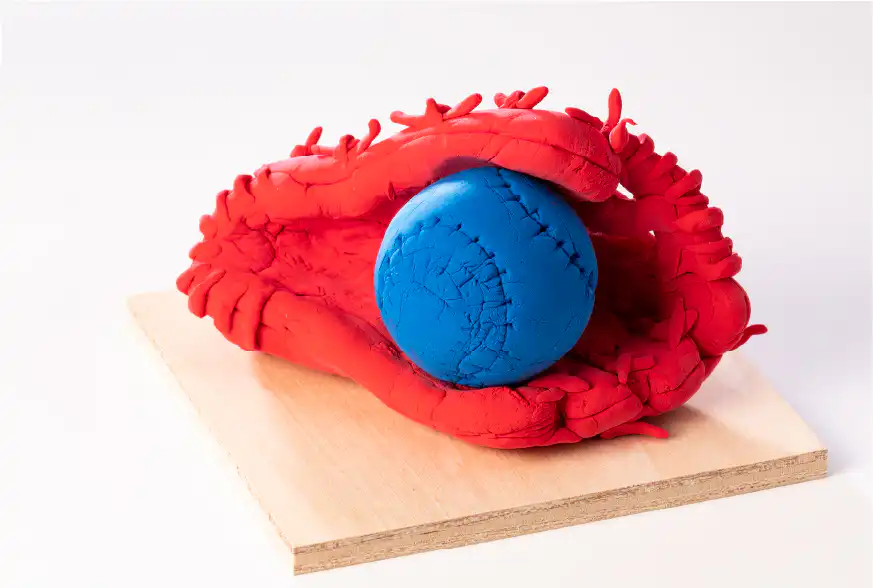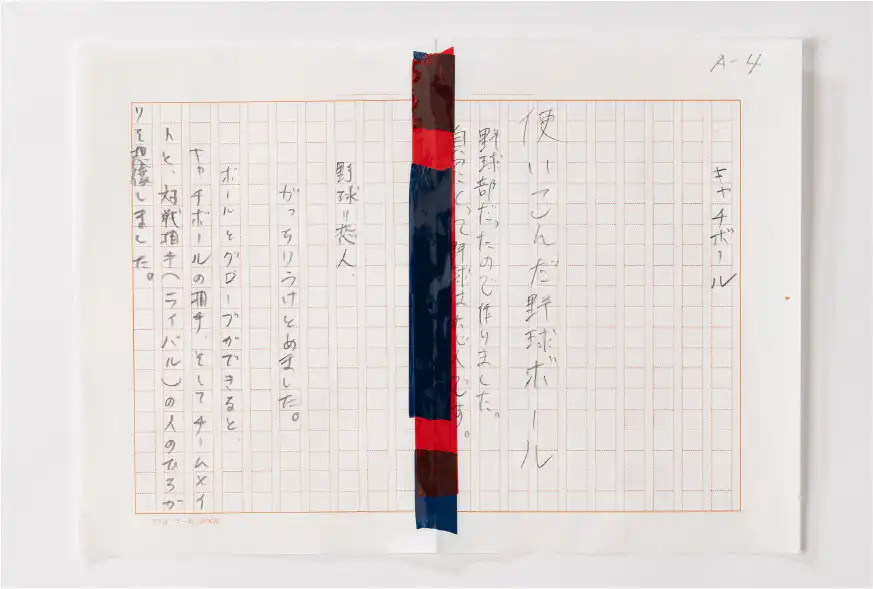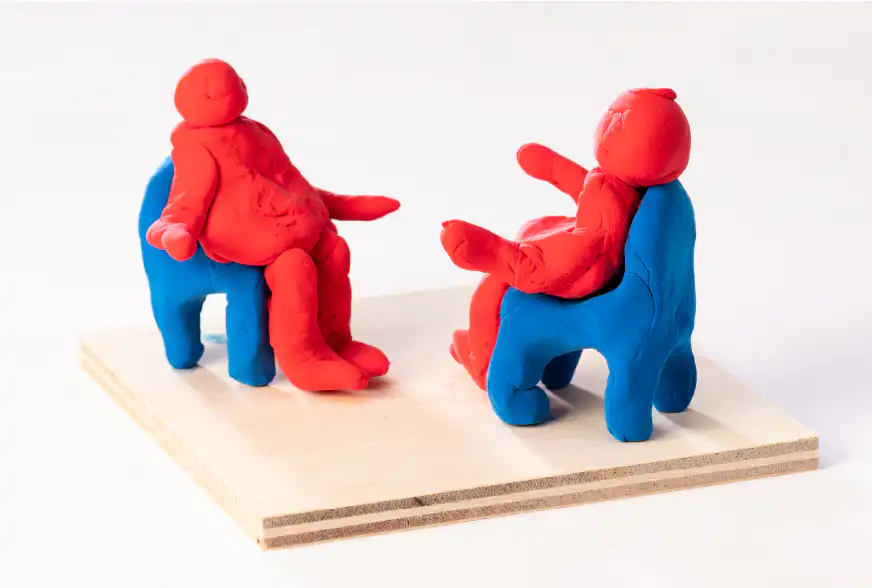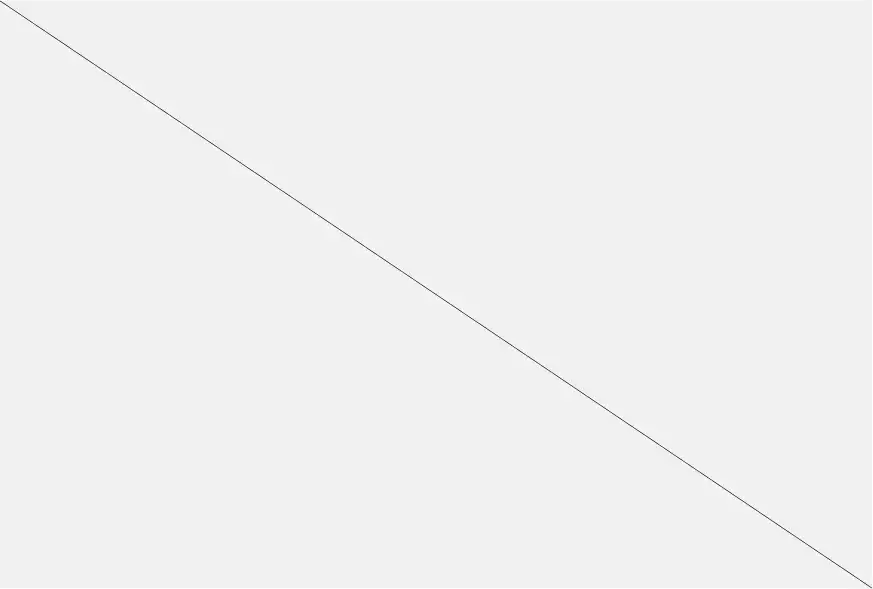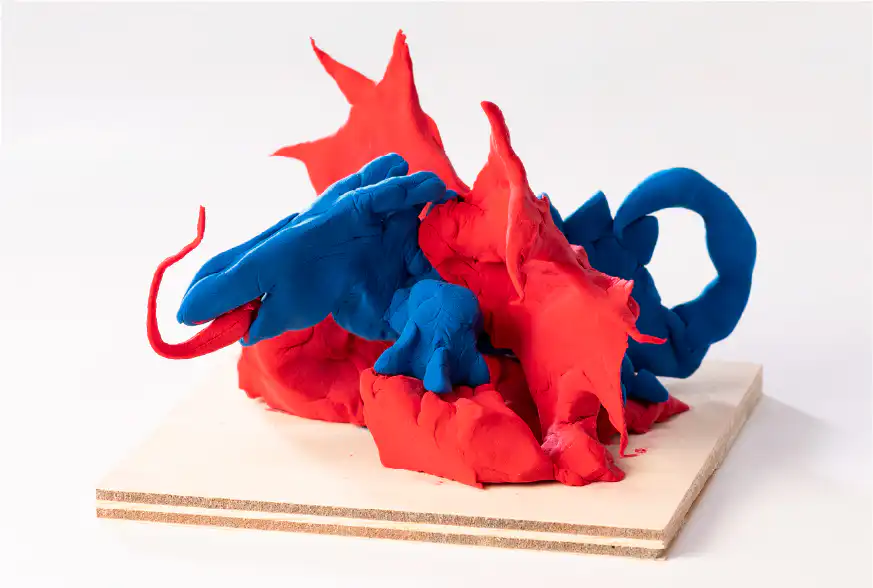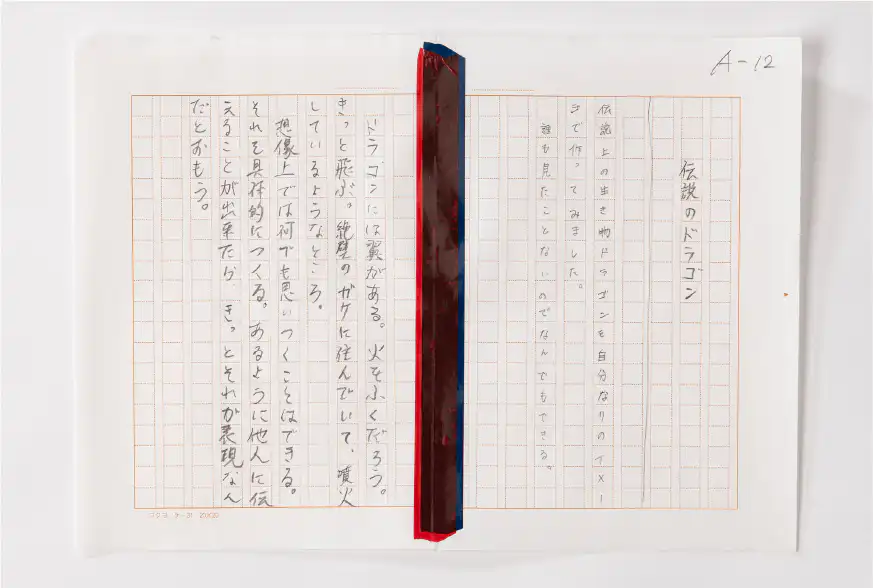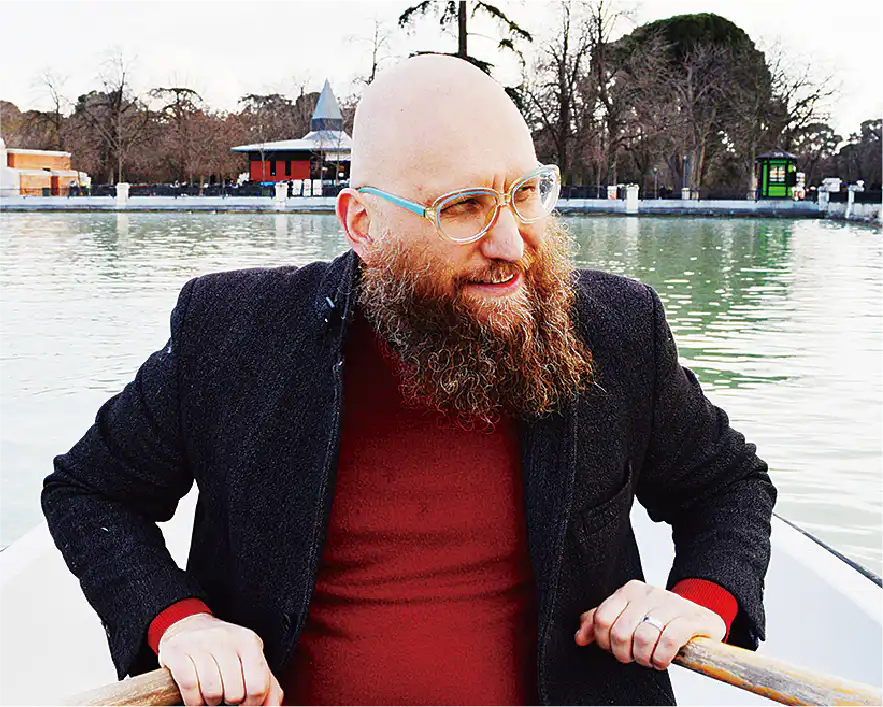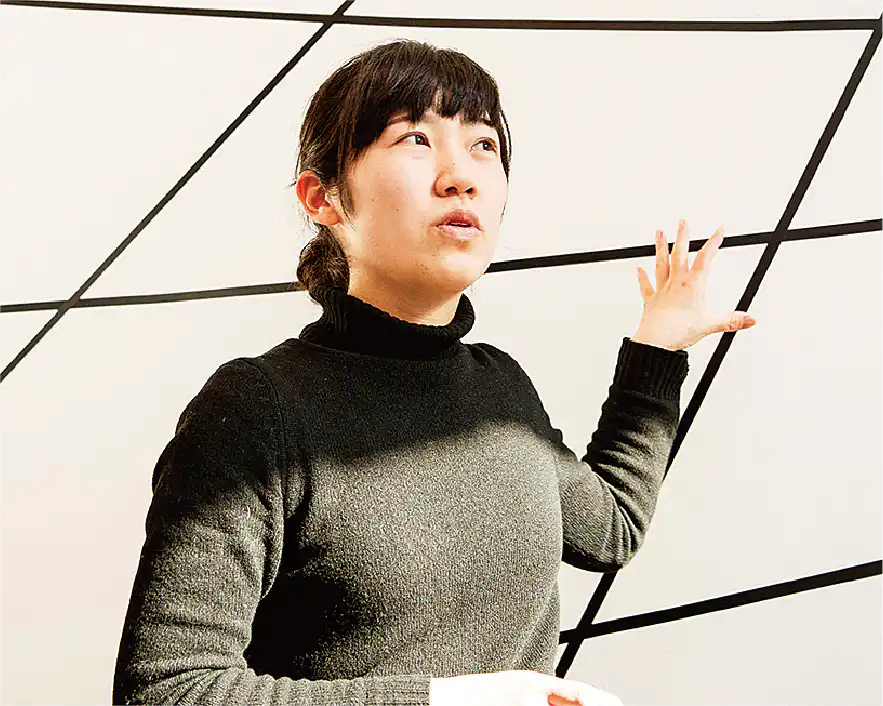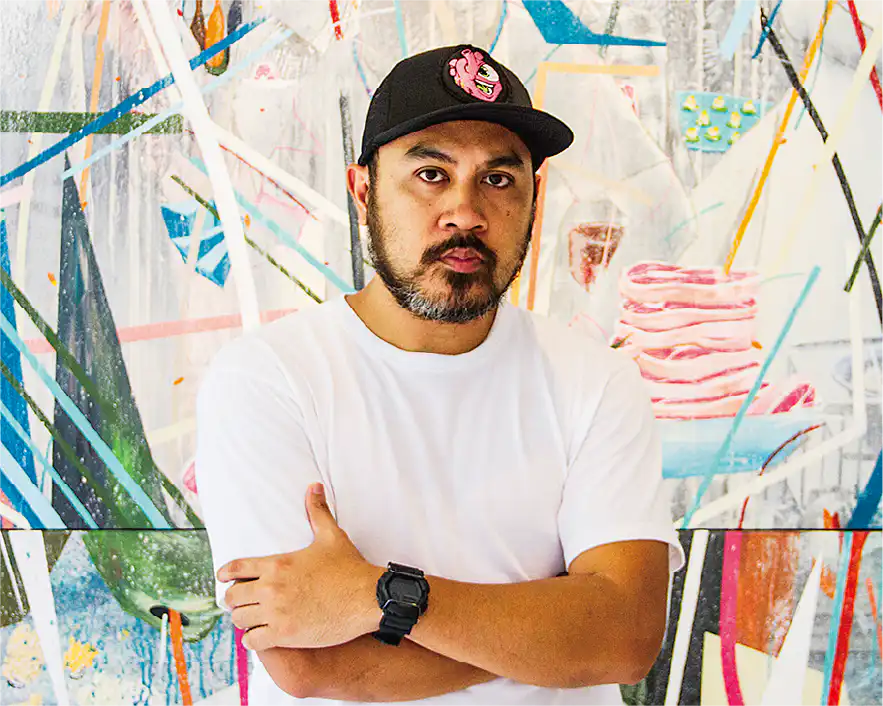
陸前高田の祭「けんか七夕」
〜2019年のリサーチと滞在制作
東日本大震災の被災した年に、残った一機を曳き、祭りを実施した写真を見たのがリサーチのきっかけでした。その異彩を放つ造形が、被災した街に明かりを灯しながら移動する様子に強く惹きつけられました。実際に祭りに参加してみると、山車を飾る特徴的な飾りである「アザフ」が風にたなびき、鮮やかな色と空の対比がとても美しく、賑やかなお囃子と太鼓を響かせながら街を動きます。特徴的なのが、山車同士がすれ違うときにそれぞれの山車の頂上で持っている七夕で叩き合います。みんなの願いが書かれた短冊がちぎれて空を舞っていくのです。
メインイベントである「けんか」は、山車と山車を引っ張ってぶつけ合います。それらのリサーチをもとに、祭りに関わる人々の想いや、その歴史に触れることで「願望、欲望や憧れを参加者それぞれが100個の短冊に書き、七夕につけたものを回転させてぶつけあう」というインスタレーションを2019年に制作しました。
Rikuzentakata Festival “Kenka Tanabata”
- Research and Creation From My Residency in 2019
The initial trigger for my research had been a photo of the festival
that continued even in the year the Great East Japan Earthquake
struck, with the town’s residents pulling the one remaining float. I
was strongly attracted by the sight of these unique forms moving
around, lighting up the stricken city. When I actually participated
in the festival, I saw the beautiful floats with their bright colors
contrasting the sky, moving through the city with their lively music
and drums. One of the unique features of the festival is that when
the floats pass each other, they hit one another with the Tanabata
rods that adorn the top of each float. The paper strips attached to
these rods, on which people’s wishes are written, are fly through
the air. The main event of the Kenka Tanabata, the Kenka (“fight”),
involves the floats being pulled against each other.
Based on those researches I created an installation in which each
participant wrote their wishes and yearnings on 100 strips of paper,
which were attached to the Tanabata tree and rotated to collide with
one another.
コロナ禍の2020年、
zoomによるリサーチの継続
zoomを活用して、「けんか七夕」に関わる方々と、祭りの抱える状況やコロナ禍での中止のことなど意見交換をしました。祭を実行する人と直に繋がったことで、希望と共に難しさも感じました。それでも街の人々の祭への想いは一切衰えることなく、中止となってしまったけれど、祭囃子を鳴らしながら街を練り歩いた様子はとても温かく感じられました。
震災遺構の準備が進む旧気仙中学校には、七夕の山車の部材を一時保管しているとのことで、立入許可をもらい見に行くことができました。気仙中学校出身で祭りにも深く関わる3名に同伴いただき、世代を越えた思い出を校舎の様々なところで聞くことができました。現在は保護のために出入り口や窓にネットが設置されていますが、メインエントランスに祭りの山車の部材が整然と積んであり、その横には被災物が置かれたままになっています。どちらもネットで囲まれた校舎の中で時が止まっていて、それぞれが来るべき何かを待っているようで、その対比が印象的でした。
Coronavirus Pandemic in 2020 and
Continuation of Research via Zoom
Utilizing Zoom, I was able to meet with local residents involved in Kenka Tanabata Festival in order to exchange opinions about the current situation of the festival and its cancellation due to the coronavirus pandemic. I had learned about through previous research, but talking directly with those who run the festival gave me both hope while also making me sense the difficulty of such an endeavor. Nevertheless, the residents’ passion for the festival never wanes, and even though the festival was cancelled in 2020, it was heart-warming to watch the people of the city parade through the streets to the sound of the festival music.
We were given permission to enter and see parts of the Tanabata float that were being temporarily stored at the former Kesen Junior High School, which was being prepared as a relic of the earthquake. Accompanied by three people from Kesen Junior High School who were also deeply involved in the festival, we were able to hear memories that transcended generations as we moved through various parts of the school building. The school building now has nets around the entrances and windows for protection, but at the main entrance pieces of the festival float were arranged in a neat pile, surrounded by other things salvaged from the wreckage. I was struck by the contrast between the school building and its contents, both of which were surrounded by nets and seemed to be standing still, each waiting in its own way for something to come.
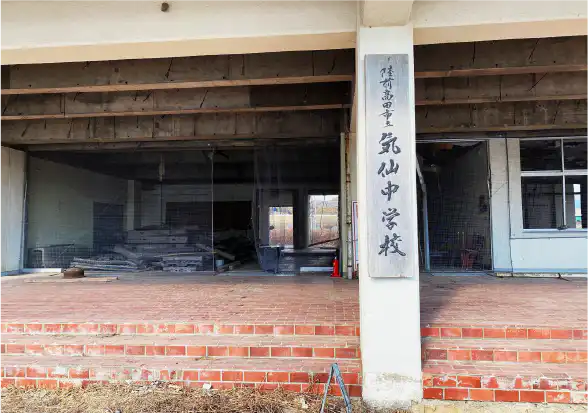

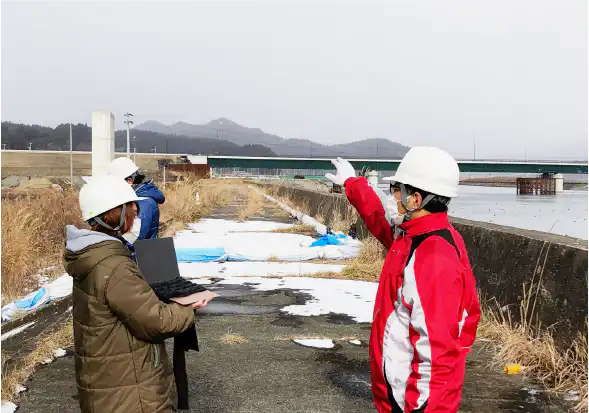

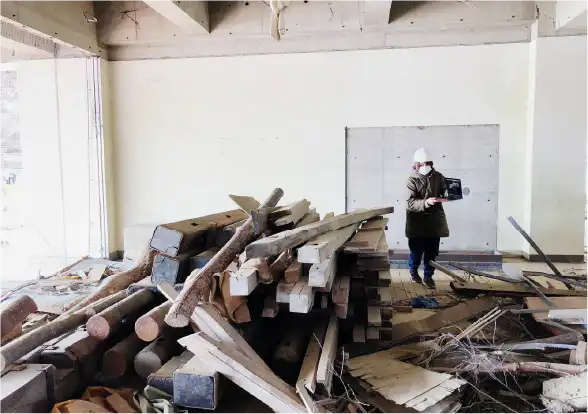
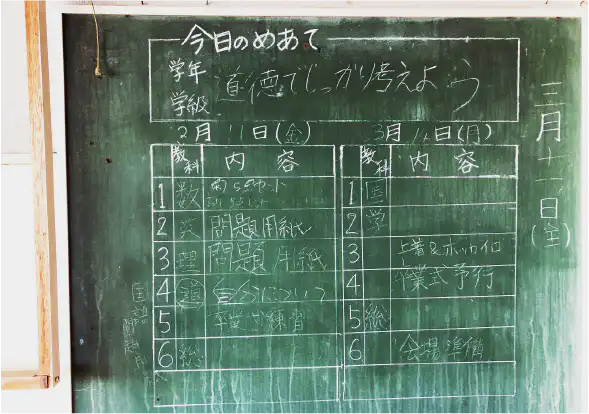
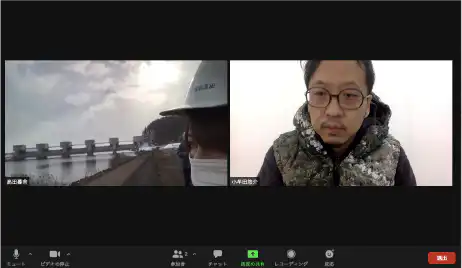
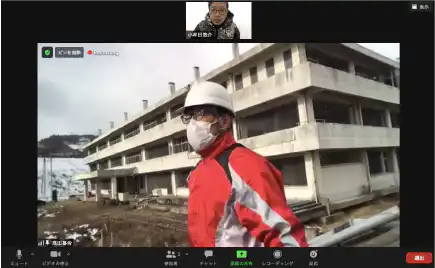
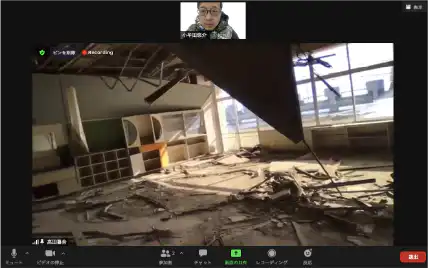
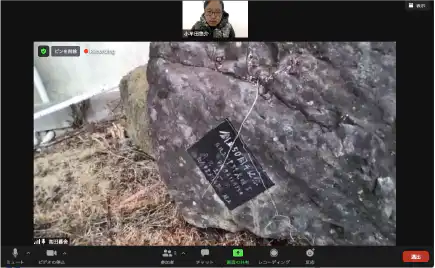
高田高校でのワークショップ
「遠隔のアザフ」
タイトルにある「アザフ」とは、けんか七夕の山車の飾りのことです。「アザフ」という語感から、「糾(あざ)ふ=より合わせる」ではないかと考え、その言葉をキーワードにしたワークショップが「遠隔のアザフ」です。ダイレクトな交流ができないので、空間と身体の距離をより合わせるため、粘土という質感のあるものを交互に交換して作品を作りました。
1週目は、高田高校にいる高校生とスタジオの私がそれぞれの場所で青の粘土で形を作り、2週目にお互い送りあった青の粘土に、赤の粘土で付け足して作品を完成させます。半分に切った原稿用紙も配り、1週目には何を作ったかを書いてもらい、2週目に作品を完成させた人がタイトルと感想を書きました。例えば、『高校三年間の想い出は野球です。野球が恋人です。』と野球のボールを作っていたり、『誰ともぶつからない、柔軟な人になりたい。』というコメントにまん丸な玉が添えてあったりしました。野球のボールには、その想いをグローブでガッチリと受け止め、柔軟でありたいまん丸な玉には、どこにでも動けるような枠をつけました。船には釣り人を乗せ、陸前高田で受けた真夏の強い日差しで灼けた経験を思い出して、麦わら帽子を被せました。こうして2週分の時間と空間を超えて、高校生の想像力や過去や将来や自分のことを象ったものと、私は2019年にみた陸前高田を象った形をより合せました。そして、過去の思い出と将来の想像の間にある、現在を視るということを意識的にできるように、3Dグラス(アナグリフメガネ)をかけました。その瞬間、きっと多次元がより合わさって見えたのではないかと思います。私は、見ることの面白さや不思議を様々な物質で表現してきましたが、興味の一つである多次元をいかに知覚するかという大きなテーマに近づくことできたのではないかと思っています。
“Remote Azafu” Workshop at Takada High School
The azafu in the title refers to the characteristic decorations that adorn the Kenka Tanabata floats. I came across the word “azafu = intertwine,” which also shares the same pronunciation. Taking the keyword, I titled the workshop “Remote Azafu.” Since direct exchange was not possible due to the distance, I and the participants made sculptural works by alternately molding blocks of clay, a material that has a strong textural quality.
In the first week, we each made a shape using blue clay at Takada High School and at my studio respectively, while in the second week we added red clay to complete the blue clay sculptures we had sent to one another from the previous week. Together with the clay, I also handed out sheets of writing paper cut in half, and asked the students to write down what they had made in the first week, while those who completed the work in the second week were asked to give it a title and write their impressions. For example, clay shaped into a baseball included the comment, “My memories of my three years in high school are of baseball. Baseball is my lover.” A different piece of clay rounded into a ball arrived with the comment, “I want to be a flexible person who never clashes with anyone.” For the baseball, I created a glove to catch his thoughts, and for the round ball that desired flexibility, I attached a frame that would allow it to move anywhere. For a clay work shaped into a boat carrying fishermen, I placed straw hats on the figures’ heads because it reminded me of the experience of being scorched by the strong midsummer sun in Rikuzentakata. In this way, transcending two weeks of time and space, the high school students gave shape to their imaginations, the past, the future, and their own selves, while I gave shape to my thoughts from Rikuzentakata in 2019, working respectively before sending works to one another to bring together various dimensions. At the end, we put on 3D glasses (anaglyph glasses) so that we could heighten awareness of the present moment, which lies between the memories of the past and the imagined future. At that moment, I am sure these different dimensions were brought even closer together. In my practice, I have been expressing the fascination and wonder of vision using various materials, but this workshop has allowed me to explore another of my interests: the grand theme of how multiple dimensions can be perceived.
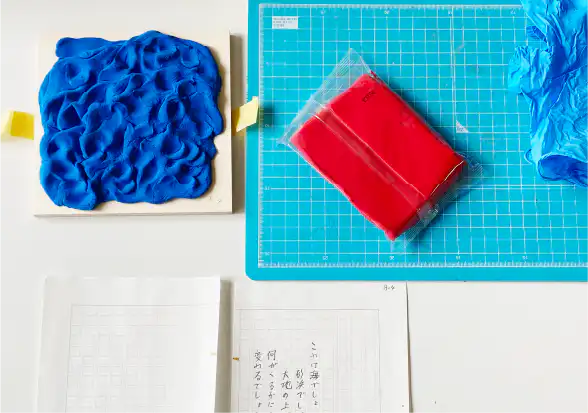
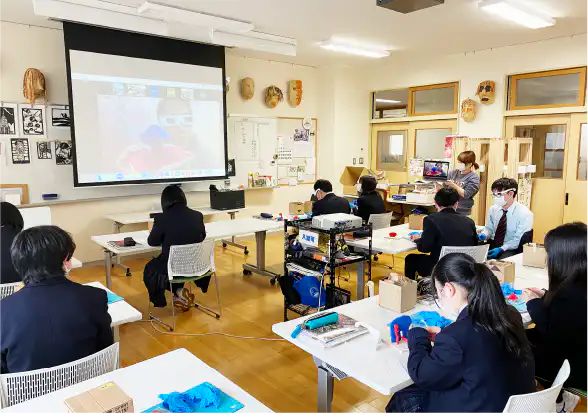
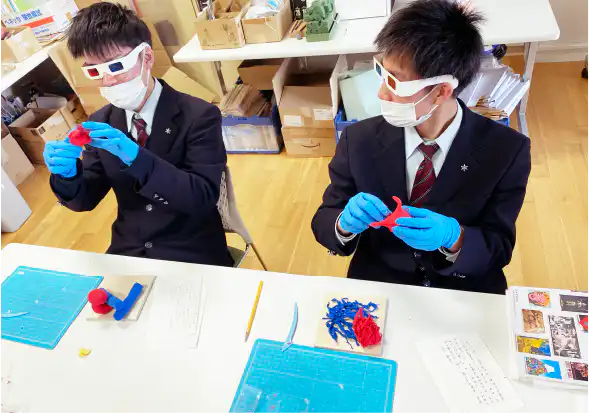
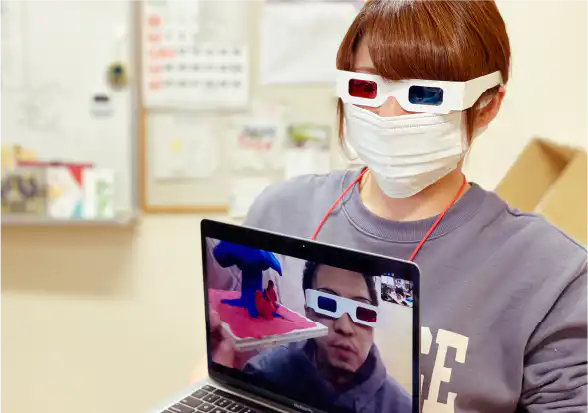
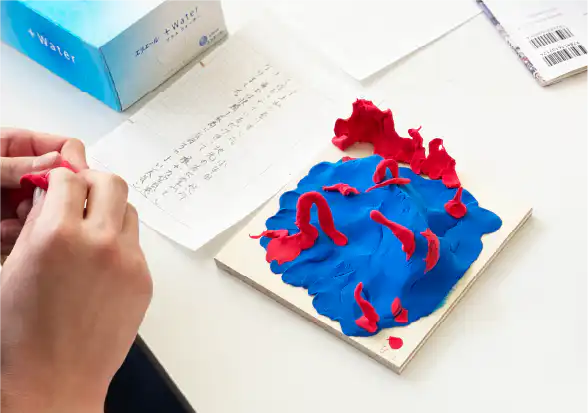
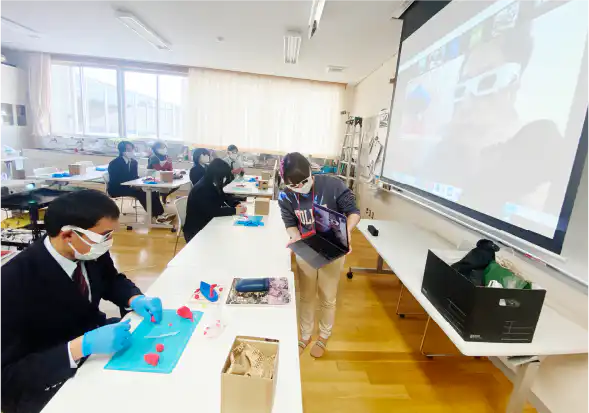
遠隔による出会い方の変化
〜AIRを通してつながる
過去と現在
コロナ禍でのレジデンスは基本的には不自由でしたが、誰とどうやって、何を共有するかを考え、必要なこととそうでないことが少しだけ整理されたのではないでしょうか。この一年で、出会い方の選択肢が増えました。
この後、コーディネーターや海外のアーティストに実際にあったときの第一声はなんていうのが正解なのでしょうか。「Nice to meet you」はもう遅い関係で、この挨拶の仕方のちょっとした違和感から、このあと世界は動き出すでしょう。その時の新鮮さを楽しみにしているし、その感覚の一つ一つにヒントがあるかもしれない。過去と未来を学び、世界と繋がり思考するため、これからも陸前高田へアクセスし続けたいと思います。
Changes in Ways of
Meeting Remotely
- Connecting Past and
Present Through AIR
Although my residency was greatly restricted due to the new coronavirus, the situation changed the way, I feel it has been possible to clarify what is necessary and what is not to some extent. This past year, I have more options in terms of how to meet people. From now on, what would be the appropriate way to greet the coordinators or other artists from overseas when I actually meet them in person? It’s already too late to say “Nice to meet you,” so I look forward to the freshness of this new experience as the world undoubtedly starts to move on from the slight discomfort this greeting will cause. There may also be a hint in each of these sensations, so I want to cherish the moment we meet. I hope to continue to access Rikuzentakata to learn about the past and future, and to think about how to connect with the world.
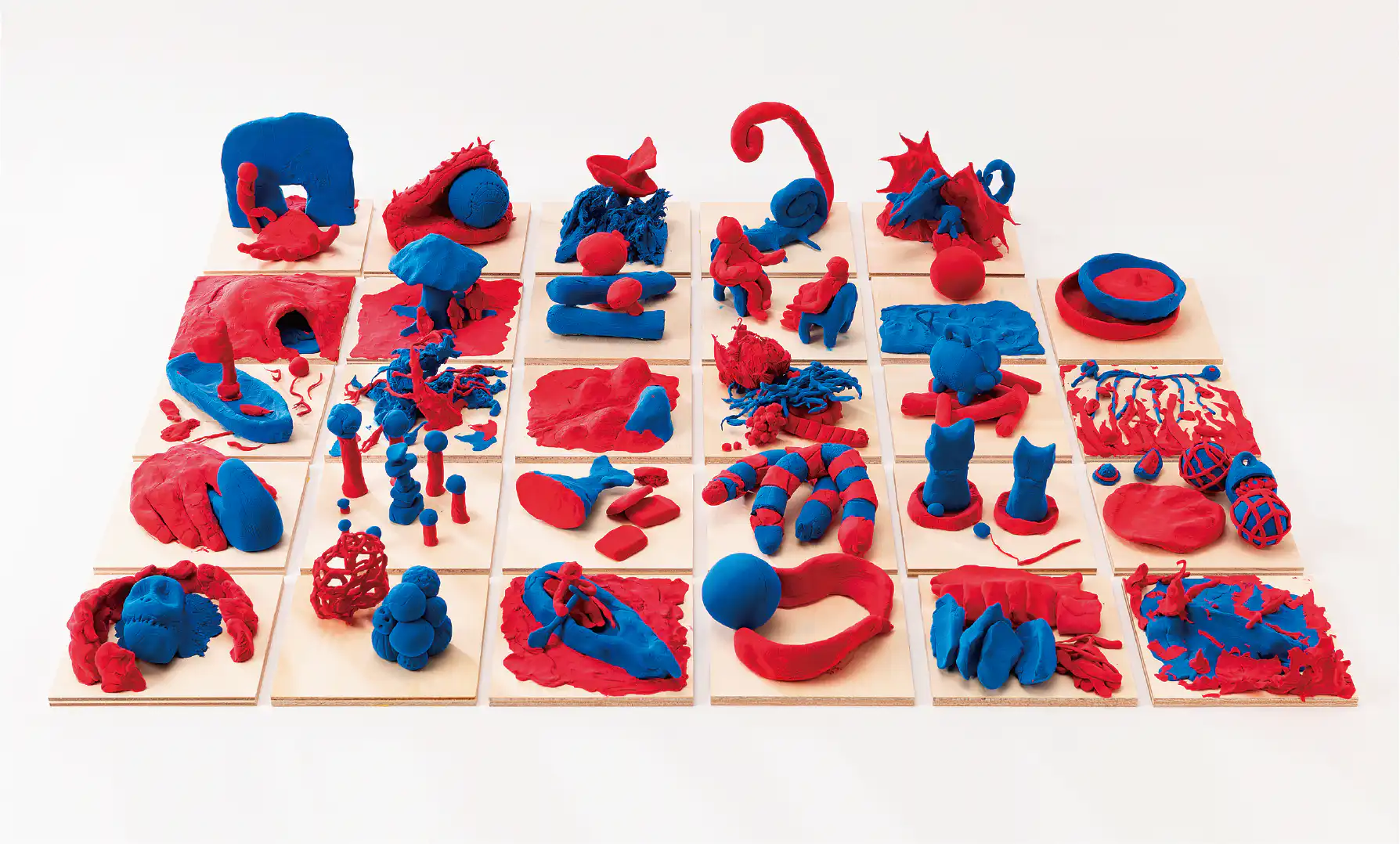
99/99
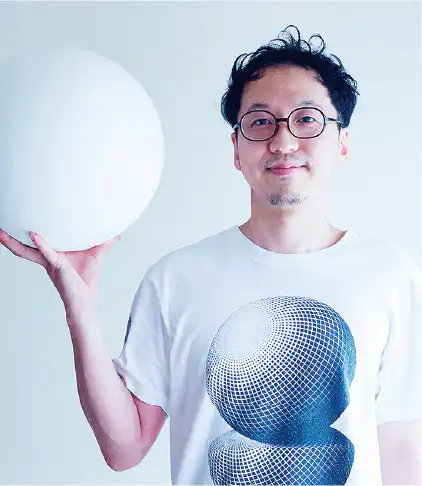
小牟田 悠介 KOMUTA Yusuke
京都造形芸術大学で絵画と造形を学び、東京藝術大学先端芸術表現科を修了。折り紙の展開図を絵画にした《Plane》シリーズや、回転する残像によって立体を作り出し、正逆回転を繰り返す《REVERSE》など、平面と立体の関係を行き来しながら、絵画とインスタレーションを行う現代アーティスト。近年ではミラーを使った空間において鑑賞者の視線をテーマとし、見ることについて考察する作品を展開している。2014年~2017年まで岡山の瀬戸内海にある犬島の1棟にインスタレーションを設置した。2016年より、上越新幹線の車内に作品を設置した現美新幹線は現在も運行中。犬島では《風景を記録する》ワークショップを行うなど、プロジェクトに関わりながら、場所や空間での作品のあり方に関心を広げている。
Born in 1983, Osaka, Japan.Studied art and painting at Kyoto University of Art and Design and has pursed master degree of Media Course at Tokyo University of the Arts. His art works represented as ‘Plane’ series: paintings are drown from a diagram of Origami, ‘REVERSE’: a spinning geometric object series which makes 3-dimensional persistence of vision by keeping spinning back and forward. Komuta is a contemporary artist experimenting relation between image and object and recently his theme is to consider how viewers read the artwork on the space he created with installing a mirror. In 2014 – 2017 he set an installation at a building in Inujima Island, Setouchi Sea, Okayama. Since 2016 GENBI SHINKANSEN, which is a bullet train in Joetsu installed art works, has run with one of his works. As the case of Inujima Island he had workshop ‘To document scenery’, along side getting involved projects, his interests has been spreading to seek the way how art should be in a place and a space.

